




CLUE
MURDER AT THE FOX ESTATE
CRIM DELL JELLYFISH
ELUSIVE COOL INDIVIDUAL
MYSTERIOUS IN A COFFEE SHOP
DRESS TO IMPRESS




There’s just something about the College of William and Mary in the fall: the crisp air, the vibrant array of leaves falling into the Crim Dell. Maybe it’s the history, perhaps it’s the architecture, you just can’t deny that there is an air of mystery here. The Crim Dell jellyfish and the ghost stories that have haunted our campus for generations are just some of the cases that we will investigate in this issue.
“Mystery” has been a dream theme of ours for a while now. Our love for classic mystery works by the likes of Agatha Christie was one of our main inspirations. This, in conjunction with a shared admiration for movies like Knives Out and Clue, made it no mystery what our theme for this semester was going to be.
Our main theme shoot, based on the 1985 movie Clue and its namesake board game, took us to James Blair Hall. Directed by beloved student photographer Ryan Goodman, our models searched for hints about “who dunnit,” casting accusatory glances at their fellow suspects. We hope you can “crack the case,” and we suggest listening to our Spotify playlist on page 27 as you do so.
We cannot thank our amazing staff enough for all of their hard work and contributions to this issue. The production of this magazine would not have been possible without the work of our Creative, Copy, Style, Photography & Graphics, and Digital teams.
Particularly, we would like to thank our Chief-of-Staff, Rebecca Altman, and our Creative Director, Jordan Lerner, for their ingenuity and perseverance. We are lucky to have such an incredible team that is constantly working to raise the standards of this publication. We don’t have a clue where we’d be without them.
We hope you enjoy uncovering all this issue has to offer. We have a suspicion that you are going to love it!


Emelia Marshall and Andrew Johnston Flat Hat Magazine Editors-in-Chief




Story and design by Andrew Johnston ’25

It was a night much like any other in mid-August in the English countryside. As I peered out of the cab window at the lush forest quickly passing by, I observed my tired and weary-eyed reflection, with stubble creeping up every corner of my face. I had not travelled more than a day’s trip from my house since the end of the war, but this was a special occasion: my cousin’s wedding. Dottie and I had both been raised by our grandmother, so to me, she was more like a sister than a cousin. However, aside from a handful of letters, I had had little communication with her over the last several years. I was 19 the last time I saw her, just a boy eager to defend his country against the Germans. I returned now a man, and a changed one at that.
As the cab slowly rolled to a halt, I was greeted by a grand limestone manor with ivy creeping up the walls and encircling the stained oak window sills. I had seen few places so beautiful in my life. As I thanked the driver and stepped out of the car, bag in hand, the large greenhouse to the right caught my eye as the fading light that managed to clear the forest at this time of day reflected off of it. I slowly walked up the cobble path to the double doors of the main entrance. I grabbed the handle of the leftmost brass knocker and rapped it three times.
After a few seconds, the door quickly swung open and I was met by a burly man with dark hair and a greying beard. Behind him stood two young women; one with dark hair and a sharp nose, whom I did not recognize, and a familiar, albeit older, face topped by golden hair that I would know anywhere. She quickly ran up and greeted me with a delighted smile.
“Jonathan! I haven’t seen you in ages,” exclaimed Dottie as she ran up to me.“I’ve missed you more than you could possibly know.”
“Hi Dottie, it’s good to see you again,” I said.
“Oh, where are my manners?” she said. “This is Charles, the Fox family butler.”
He gave a quick hello with an accent I could not identify and reached out to shake my hand. He had quite a firm handshake. Despite his stature, there was a kindness behind his dark brown eyes. During
this interaction I noticed the woman behind him walk up the large staircase with a disgusted look on her face, apparently disinterested by my presence.
“Sorry about her,” he said in a low voice. “I believe she was expecting her aunt and uncle to arrive.”
“Don’t worry about it,” added Dottie. “I’m sure she’ll love you once she gets the chance to know you!”
The house was filled with relics and oddities from around the world. Beautiful Persian carpets, full sets of armour that as far as I could tell were authentic, and even some gold coins that seemed to be Roman in origin. It was a far cry from the tiny cottage I was accustomed to.
Charles led me up the staircase to the room I would be staying in. As I walked through the halls, I heard two unfamiliar voices talking through a cracked open door.
“You go on ahead. I’ll catch you in a minute,” said Dottie.
After she left, I crashed into my bed, exhausted from the long journey.
Around half an hour later I was awoken by a gentle knock on my door. It was Charles.
He informed me that dinner had been prepared and the rest of the guests were already gathered in the dining room.
Just as I joined the others at the long ornate table tortured by the delicious smells of steak and wine and the growling of my stomach, there was suddenly a soft rhythmic knock on the door. The older looking man with a well-kept beard (who I assumed was the family patriarch) and Charles stood up simultaneously.
He quietly voiced, “It’s alright Charles, I can answer it.”
The dining room was but one room away from the main entrance, so I was able to hear him open the door and his short conversation with the newcomers.


“Hello, Cornelius,” said the man at the door.
“Good to see you Reg! Come on, shake my hand!” said Cornelius.
“Reg, where is Dad’s watch?”
“I left it at home today.”
“Good to see you as always Matilda, my little brother hasn’t been causing any problems for you, has he?” asked Cornelius.
“No more than he has in the last 30 years,” she said, chuckling a bit.
After exchanging a few more pleasantries, the man I now knew to be Cornelius (who I was mildly acquainted with through some of Dottie’s letters) and the new guests sat down at the table.
Reg sat to my left and introduced himself and his wife. They both seemed well-mannered, but you wouldn’t have guessed that they were of high standing were it not for their lavish clothing.

After a few more minutes, Charles, who at some point during my conversation must have snuck out, walked in with several large platters. One contained the steak I had been smelling, another, a fish, herring from the looks of it, and the other, a variety of fancy sides in ornate silver bowls.
It was all delicious.
After dinner we moved into the parlour where I got to know some of the other guests better. The other woman who was at the door when I arrived was named Evelyn. She didn’t work or have any real ambition as far as I could tell, aside from tending the large greenhouse at the far side of the manor. She grew all sorts of herbs to be used in the meals, and flowers for the arrangements that were displayed around the house. She was quite boastful of the arrangements she had recently made for the wedding, explaining the flower she used to tie the whole thing together was foxglove, in reference to her family’s last name, Fox, which made Charles grimace for some reason when she brought it up.
Reg was Cornelius’s younger brother and business partner. He was married to Matilda, but the two had no children. They were both quite adored by their niece and nephew, though. I connected with Reg over our time in the service. While we may have served in different wars, it was still comforting to have someone here in this larger-than-life place who had at least some experience with the harsh realities of human conflict.
Marcus, Dottie’s fiancé, and the older brother of Evelyn, was the apparent heir to the Fox estate. He seemed to be the most eager of the family to get to know me. It seemed Dottie had spoken very highly of me and he was trying to earn my approval. He was a broad, tall man that I imagined was the spitting image of his father at his age, given some of the portraits hanging in the house. He seemed a bit brash but was clearly well-educated and driven, unlike his sister. I did get the sense that there was tension between him and his father every time they interacted, but that did not stop us from getting along rather well. I talked with him and Dottie well into the night.
I woke up late the next morning. I quickly got dressed and made my way downstairs to the parlour where I heard Dottie having a conversion with Matilda. They were drinking aromatic tea with a unique scent. I listened in on their chatter about the latest fashion trends in London, and though I thought the dress Matilda was wearing was rather much, it clearly drew my cousin’s admiration. We were shortly joined by

Reg, who, upon coming into the room, said he had just been talking with his brother who now wanted to see Dottie. As she prepared to leave, he also said, “He asked for a cup of tea to be brought up.”
“Okay,” she said with a nod.
I spoke with Reg for a few minutes and, as I didn’t know much about the family and its fortune, inquired how the family came to own the estate.
“We originally owned a small steel plant, nothing too special if you ask me, but once the first war happened, Cornelius saw a chance to capitalise. He couldn’t enlist due to his bad knee. Since then, we’ve opened several more plants and converted them to help manufacture armaments. It’s been quite successful. I’ve been urging Cornelius to take us public, but he seems reluctant to do so.” We chatted for a few more minutes while playing a game of chess. He was a good deal better than I.
Suddenly, I heard a loud crash, the sound of glass shattering upon a strong impact, followed shortly by a blood-curdling scream. The three of us sprung up and sprinted towards the noise. We soon saw Evelyn on her knees, covering her face, dripping with tears.
The scene that I would soon be met with was something I would never forget.
There was a star-shaped hole in the glass roof of the greenhouse, and as I stepped closer it became apparent what had broken the glass. Cornelius lay motionless on the floor soaking in a pool of his own blood.
Matilda rushed down the stairs, followed shortly by a soaking wet Marcus.
“I can’t find the greenhouse key!” Evelyn exclaimed in a panic. “It has a flower on the handle!”
Everyone scrambled to look for the key, but we were unable to find it.
“Forget it!” Marcus yelled. “What if he’s still alive?! We don’t have time for this!” Marcus charged towards the glass door of the greenhouse with his left shoulder. His brisk strike shattered it in one go.
He ran towards the spot on the ground where his father lay and was followed quickly by myself and the others.
Cornelius’s blood seeped through the cracks of the vibrant tiled floor; the sparkling glass that had fallen from the roof formed a ring around his body. The metallic odour of blood overpowered the surrounding plants.
Death was not new to me, but seeing a man’s body so horrifically splayed out like this was still harrowing. This death was unnecessary, meaningless.
We circled around the spot where he lay, adrenaline pumping through my veins.
His eyes, still open, were heavily dilated. It was clear from the deep blue eyes he shared with his brother and children that Cornelius Fox was dead.
His hand, outstretched at an uncomfortable angle, appeared to be holding something. I unfolded his stiff, spindly fingers and retrieved the piece of paper he was holding.
“What are you doing?!” shouted Marcus. “I knew he was a miserable old man, but I can’t believe he’d off himself like this.”
Despite having spoken to this man for no more than a few minutes myself, I couldn’t believe it either. Why throw yourself through the roof of a greenhouse? If you were to jump from this house, there would have been plenty of better places to do so.
“Someone had to have killed him,” I said in a hushed tone. I carefully unfolded the paper. The header read “Last Will and Testament of Cornelius D. Fox.” Before I could finish reading the paper in its entirety, Evelyn snatched it out of my hand.
“Well, it’s obvious to me who’s responsible for this,” said Evelyn, failing to conceal the anger and sadness in her voice. “No one had a reason to want the man dead other than Dottie!”
“What do you mean?” Dottie shouted.
“Marcus has been written out of the will,” I said. “All


50% of Cornelius’s equity in the company, as well as the estate, are to go to Evelyn.”
Marcus grimaced. “You knew as well as I did that he didn’t approve of our marriage, Dot.”
“I talked to him earlier today and told him I did not care for the money, and I would marry you either way. It makes no difference to me Marcus.” I noticed a cut on his left hand likely from charging through the glass door of the greenhouse.
“So, you admit you were with him earlier! It looks like you were too late though!” Evelyn said with a sneer.
Dottie looked like she was on the verge of tears.
“There’s one problem,” I said. “This will isn’t signed.”
“What!” Evelyn said, examining the paper again.
“Should I phone the police?” asked a sick looking Matilda.
“No,” said Reg. “Not until we know who is responsible, the death of Cornelius is sure to garner media attention and that is the last thing we need right now.”
Another piece of glass suddenly fell from the ceiling, narrowly missing Charles. It brought my attention to the balcony above. “What room is that?” I asked.
“Why, that’s Cornelius’s study!” Charles said.
“If we want to get to the bottom of this, I imagine investigating that room is pertinent. But before we can do that, we need to establish everyone’s whereabouts. Myself, Reg, and Matilda were in the parlour for about 45 minutes prior to the incident,”
I said, Matilda softly nodding in agreement.
“Well as you could tell from my condition when I arrived downstairs, I had been taking a bath,” Marcus said.
“Can anyone vouch for you?” I asked.
Charles raised his hand and said that he could hear running water around that time from the kitchen where he had been for most of the day.
Evelyn then volunteered that she had been in her room for a good part of the day, and had just arrived at the greenhouse moments before her father came crashing through the roof.
“How about you, Dottie?” She asked with a glare.
“I had met with him about 45 minutes beforehand, he wanted to assert that he would write Marcus out of the will if I were to marry him. I told him that it made no difference to me and then went to the library.”
“So you admit you were the last one with him! The library is two doors down from his office!”

“Now isn’t the time for accusations!” Marcus said in a fierce tone. “We need to investigate his office before we jump to any brash conclusions.”
The seven of us went up the suddenly more imposing staircase and eventually reached Cornelius’s study. It was the room I had heard two muffled voices in yesterday. As the door swung open, a large open room, highlighted by a stained-glass window framed above a balcony with an intricate brass railing. I pulled the chain cord on the lamp nearest the entrance, illuminating the space. In the centre was a large oak desk before collections of 17th and 18th-century books, likely what was contributing to the musty smell of the room. To the right, near the

entrance, was a closed door which, upon further inspection, was a bathroom far less fancy than the rest of the well-decorated office. As I approached it, I noticed a broken teacup on the floor surrounded by a puddle.
While the others looked around the office-proper, I chose to focus my attentions here to quiet my racing mind. The small window above the tub was open, which struck me as peculiar given how hot it gets in this part of England in August. The basin of the tub was still wet; so was the lone towel in the bathroom.
After about 20 minutes of investigating, little seemed out of the ordinary.
“We’re getting nowhere!” Evelyn exclaimed, “We need to split up!”
“Alright, meet in the parlour at midnight and if a culprit is yet to be identified I think we ought to alert the police,” Marcus said. “I’ll go with you, Evelyn.”
Matilda and Reg paired up as well, leaving me with Dottie and Charles. I detested this idea. If we weren’t careful, it could give the culprit a chance to destroy evidence. Even worse, multiple culprits could end up paired with each other. I was no longer able to keep a watchful eye on the others, and I was with the only person I knew to be innocent, Dottie. Something like this is simply not in her nature. Regardless of her lack of alibi, I know that to be certain.
I felt there was still more to be seen in the study, so the three of us remained there. I had yet to take a real look at his desk. There was little of interest: a stack of papers, a magnifying glass, and a teacup still full of the aromatic tea. Charles found it odd there were two teacups in the office, as the only one he had prepared for Cornelius was the one that Dottie had brought up to him, but he seemed to think it of little importance. I rifled through the stack of papers while Dottie and Charles looked under chair cushions, carpets, and the like. While I was doing that, something rather odd fell out of the stack. It was a handwritten note on the back of a receipt. It said 45 pounds per share. There was a line for a signature, but — much like Cornelius’s will — it was left unsigned. The other side was a banknote for a withdrawal of roughly £80,000, more money than
most would likely see in their lifetimes.
I asked Charles how much a share of the Fox company was worth. He asked, “Is this really a time to be concerning ourselves with finances?” However, realising the importance that it may have under the current circumstances, he reluctantly agreed to tell me:
“The stock is not publicly traded, but given the value of the company as a whole, probably around 60 or so pounds per share. It’s privately held though, so the only one that you’d be able to sell it to is the company or in this case, Cornelius.”
There was one place in the room where I had yet to examine: the balcony. From the inside, nothing seemed out of the ordinary. Standing over and seeing the spot where Cornelius had fallen was daunting. Had the greenhouse not been illuminated, I would have been able to see very little, as the sun had well since set. As I placed my hand on the railing, I noticed that the brass balcony bannister had a small smear of blood on the left side.
The next place I wanted to look at was the library. Nothing seemed out of place aside from the wedding arrangement near the entrance. Several of the flowers looked mangled, a far cry from the normal meticulous workings of Evelyn. The book that Dottie said she had been reading after her meeting with Cornelius was still out; I sighed with relief.
We next decided to search the guest rooms. They were all nearly identical to mine and I found little of interest in Evelyn’s room. It was incredibly neat, with all sorts of gardening accessories mounted to the wall.
I took a brief break to go to the bathroom between her and Marcus’s room while Charles and Dottie examined it. They didn’t find anything. Dottie said, “See, I told you, Jonathan!” almost boastfully, which seemed inappropriate given the situation, but that’s Dottie for you.
Next, we went into Reg and Matilda’s room. I shook the bed sheets and didn’t see anything abnormal. Reg had apparently only packed two suits: the one he was wearing, and a far more casual one in his suitcase —


a stark contrast to his wife, who had multiple pieces of luggage to store her excessive wardrobe.
“Don’t you want to take a look in my room?” Dottie asked innocently after leaving Reg and Matilda’s.
I considered her above suspicion, but decided to humour her. After shaking the sheets of her bed and lifting the mattress, as I had in the other rooms, something fell to the ground. It was a large brass key with a flower on the handle.
I heard the grandfather clock in the parlour strike midnight and knew that my time to investigate was over. I looked at Dottie, startled by the revelation.
“I haven’t the faintest idea how it got here. You have

to believe me, Jonathan!” she said.
It all became clear. I know who killed Cornelius Fox.

One of our Editors-in-Chief, Andrew, posed the magazine staff a challenge: write a conclusion to his unfinished story. Two of them (and ChatGPT) were up to the challenge. To read all of the endings scan the QR codes below!



by ChatGPT

by Peerawut Ruangsawasdi ’26
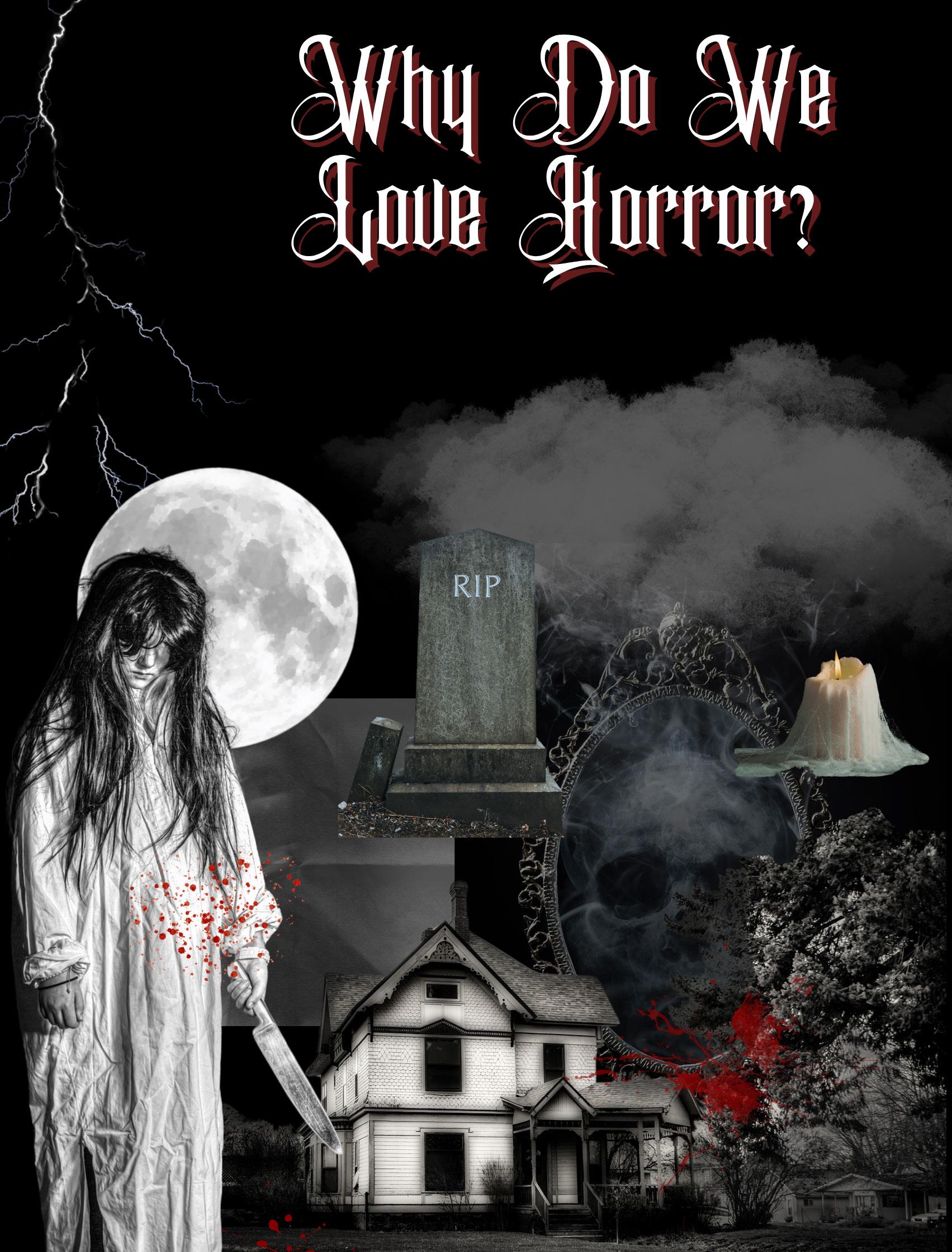
Halloween brings with it many traditions, one of which is watching scary movies. Maybe you’re someone who enjoys the adrenaline of being scared, or maybe you’d rather watch something more tame to round out the night. Whatever you prefer, Sofia Hurlbert ’28 explains the psychology of why people like watching scary movies.
Every year October brings along annual traditions: carving pumpkins, raking leaves, and of course, Halloween. Launching these traditions are both the classic horror movies and the scariest new releases. Friends gather late at night, popcorn and candy corn in hand, preparing to watch The Conjuring. The more timid friends flee after the first jumpscare, while the horror enthusiasts are already queuing up the next film.
For the most part, we either love or hate horror movies. Personally, I love being scared in the moment, but have some regrets when I’m alone late at night and it’s pitch black. Even though I have terrifying nightmares and sleep with the light on, when my friends ask if I want to watch another scary movie, I just can’t say no. Why does this happen? Why do some people love the thrill of horror movies while others will do anything to avoid them?
To understand this phenomenon, we must look at fear and its causes. By definition, fear is the reaction to some kind of threat or danger. It comes from our ancestral roots when we encountered life-and-death situations at every twist and turn. Nowadays, life is much less perilous, yet these instincts from long ago remain. It is very unlikely that a wolf is going to attack us, but we still experience this fear, even in a situation as tame as finding a spider in the bathroom. An article in The Atlantic titled “Why do some brains enjoy fear?” explains what elicits fear in people. “Anything that doesn’t make sense or causes us some sort of dissonance, whether it is cognitive or aesthetic, is going to be scary,” Allegra Ringo said.
Horror is a genre of movies specifically made to induce fear in viewers. This is done in a variety of ways, including suspense, jumpscares, supernatural creatures, or psychological terror. All of these factors can create dissonance within the mind and thus induce fear in the viewer.
When someone experiences fear, the body has a physical reaction: the ‘fight or flight’ response. For
example, during a suspenseful scene leading to a jump scare, the brain is flooded with chemicals, especially adrenaline. Adrenaline causes alertness as heart rate, blood pressure, and blood sugar increase. When the jumpscare is over, there is a come down process where the brain releases dopamine to let the body know it is safe again. Dopamine is a chemical in the brain associated with pleasure and reward. So, when watching a horror movie, viewers feel good after ‘surviving’ the experience.
People often watch horror movies to seek these sensations and experience this ‘high’ in a safe way. Most can only truly enjoy being scared if they know they are not actually in real danger. They enjoy the sensation of their heart thumping with butterflies in their stomach while waiting for the ghost to pop out at them, followed by screams and laughter as everyone recovers from the fright. According to the article “(Why) do you like scary movies?” by Martin G. Neil, those who showed sensation-seeking tendencies (such as risk-taking) were more likely to enjoy horror movies and scary experiences.
Despite this ‘happy’ chemical release, many do not enjoy horror movies at all. In the article from The Atlantic, Ringo reveals that research has shown that not everyone’s brain experiences the same chemical releases in the same situation. Some people have less of a dopamine response to fear and therefore don’t experience the same kind of reward after being scared. Others simply don’t like the sensation of fear.
Enjoyment or dislike of horror is not just determined by preference. There is also scientific reasoning behind it. To truly understand why so many gravitate towards these thrillers, both aspects have to be taken into consideration.
Whether or not we can understand the true reason why people enjoy being scared, horror movies will still be watched and created. The thrill will continue to bring people together as they are captivated by the terror of the experience. These movies will remain a Halloween staple, and people (including myself) will continue looking for a good scare.
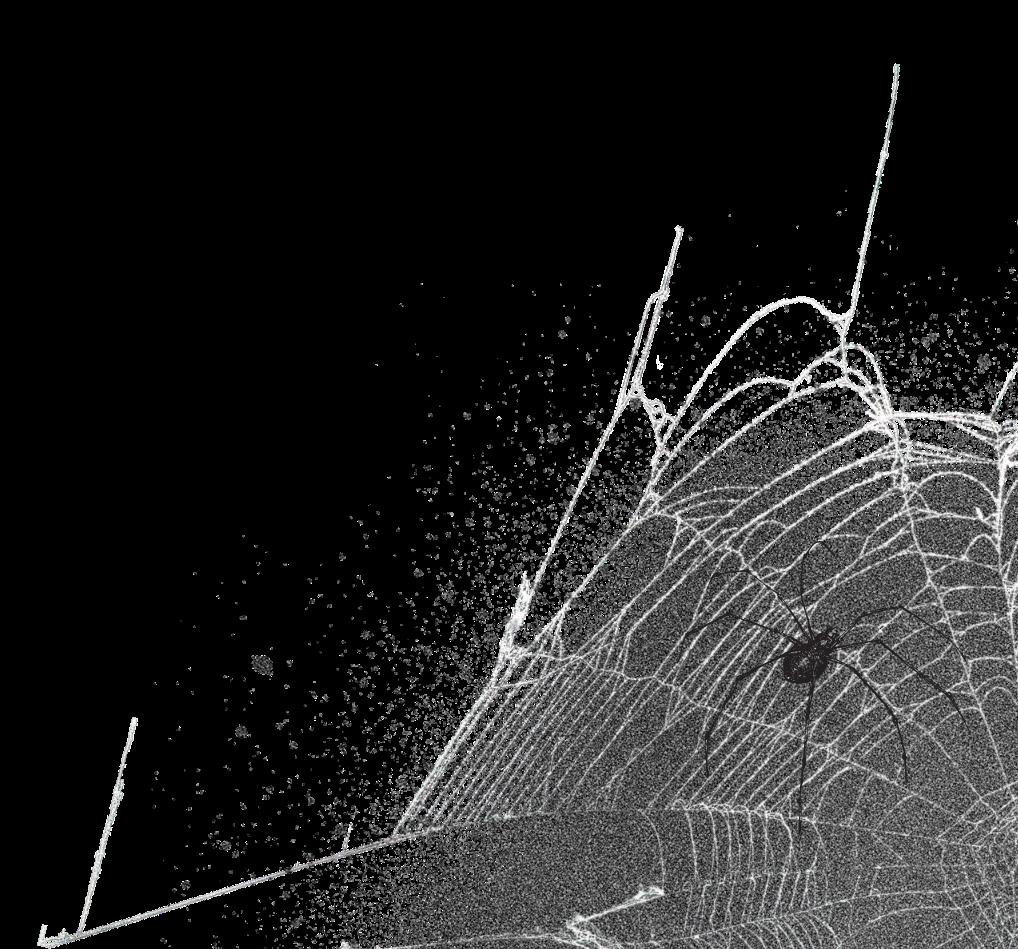


Mr. Boddy was last seen prior to the dinner party he held with his five closest friends, Mrs. Peacock, Professor Plum, Mr. Green, Mrs. White, and Colonel Mustard. All five are now being investigated for his murder. Mrs. Peacock and Colonel Mustard have accused the other three of plotting against him.
Professor Plum, Mr. Green, and Mrs. White maintain that Mrs. Peacock and Colonel Mustard snuck away multiple times over the course of the dinner party and were the last two seen with him. The group is currently being interrogated.


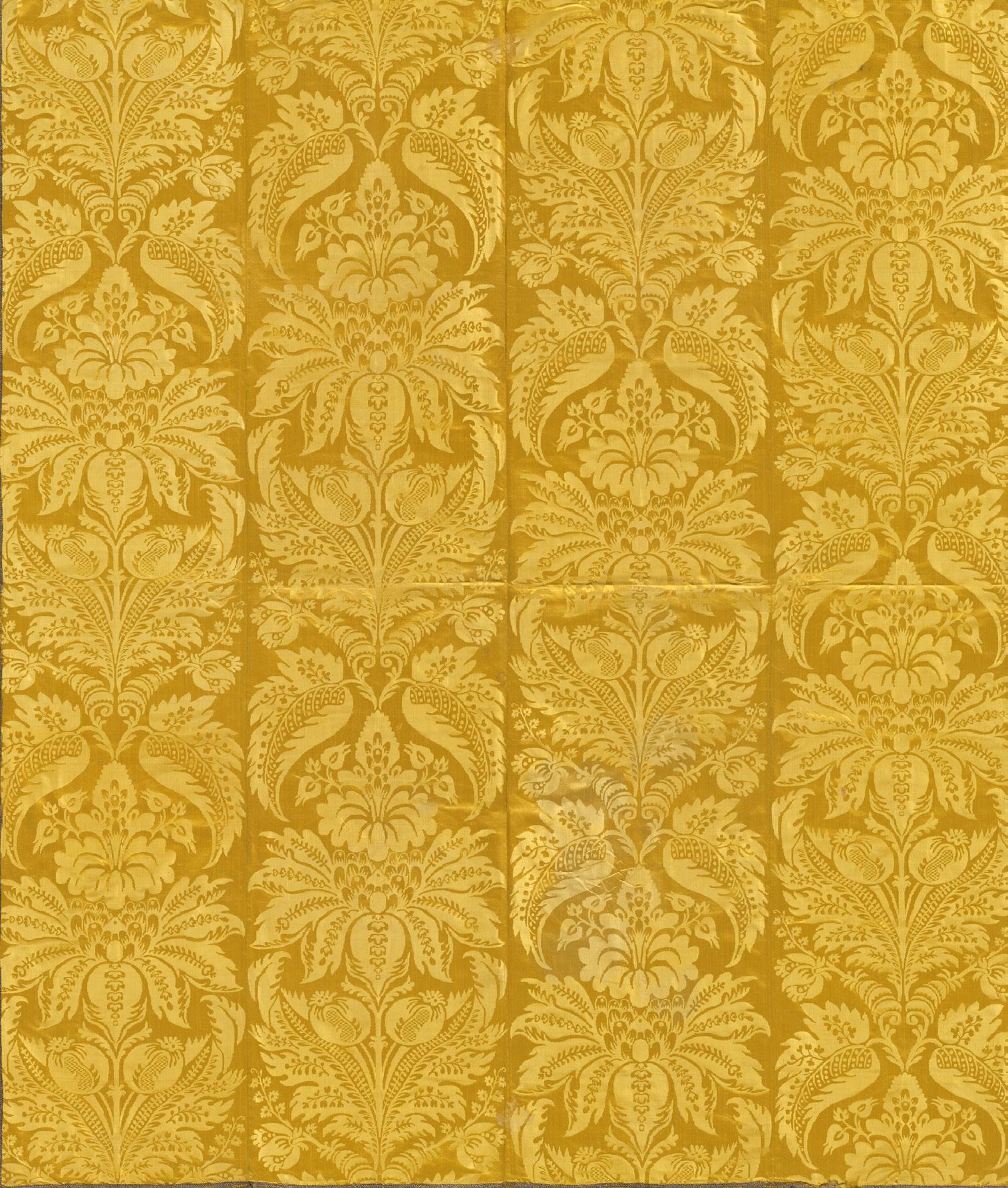
MRS. WHITE


MRS. WHITE


PROFESSOR PLUM

PROFESSOR PLUM







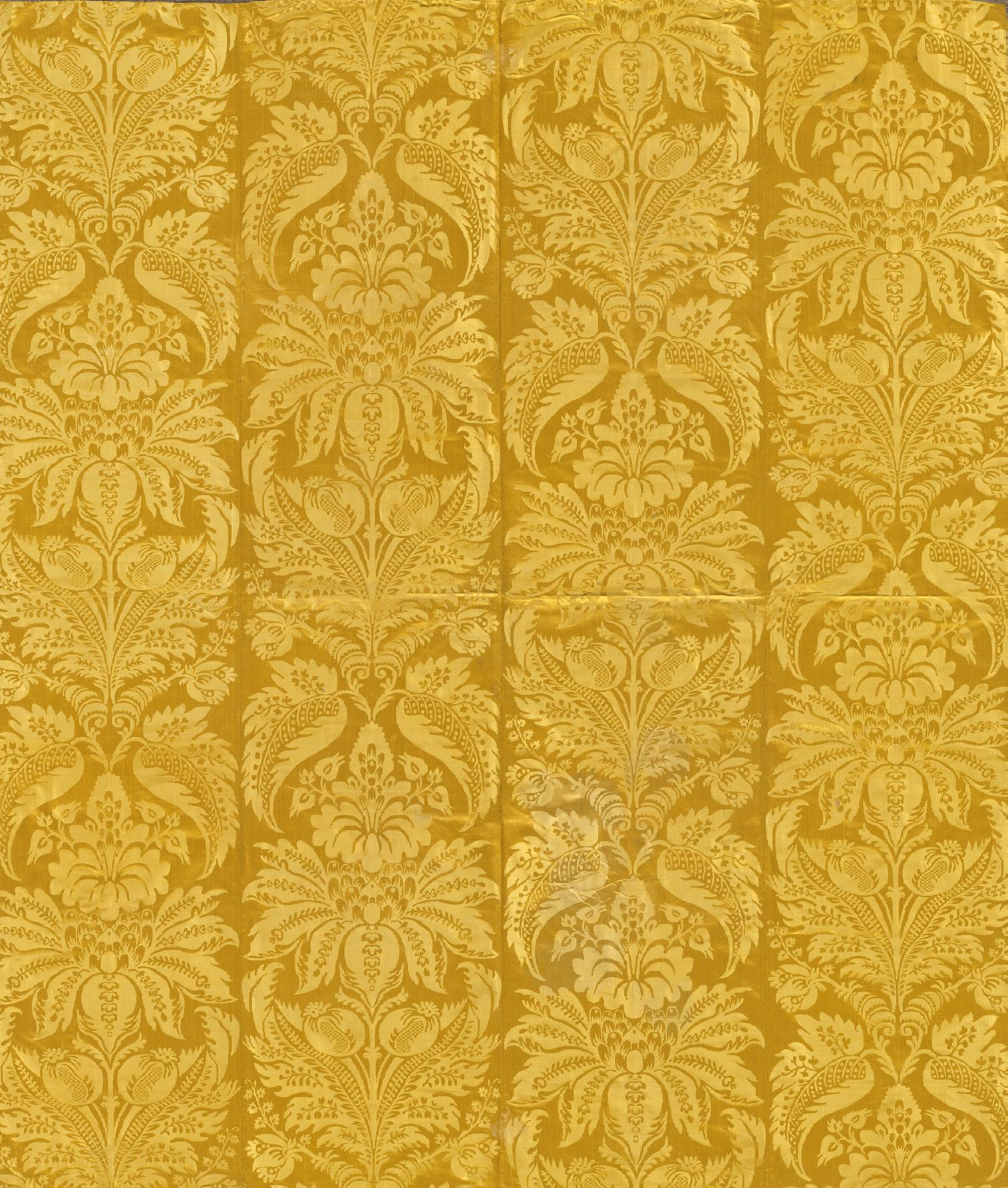























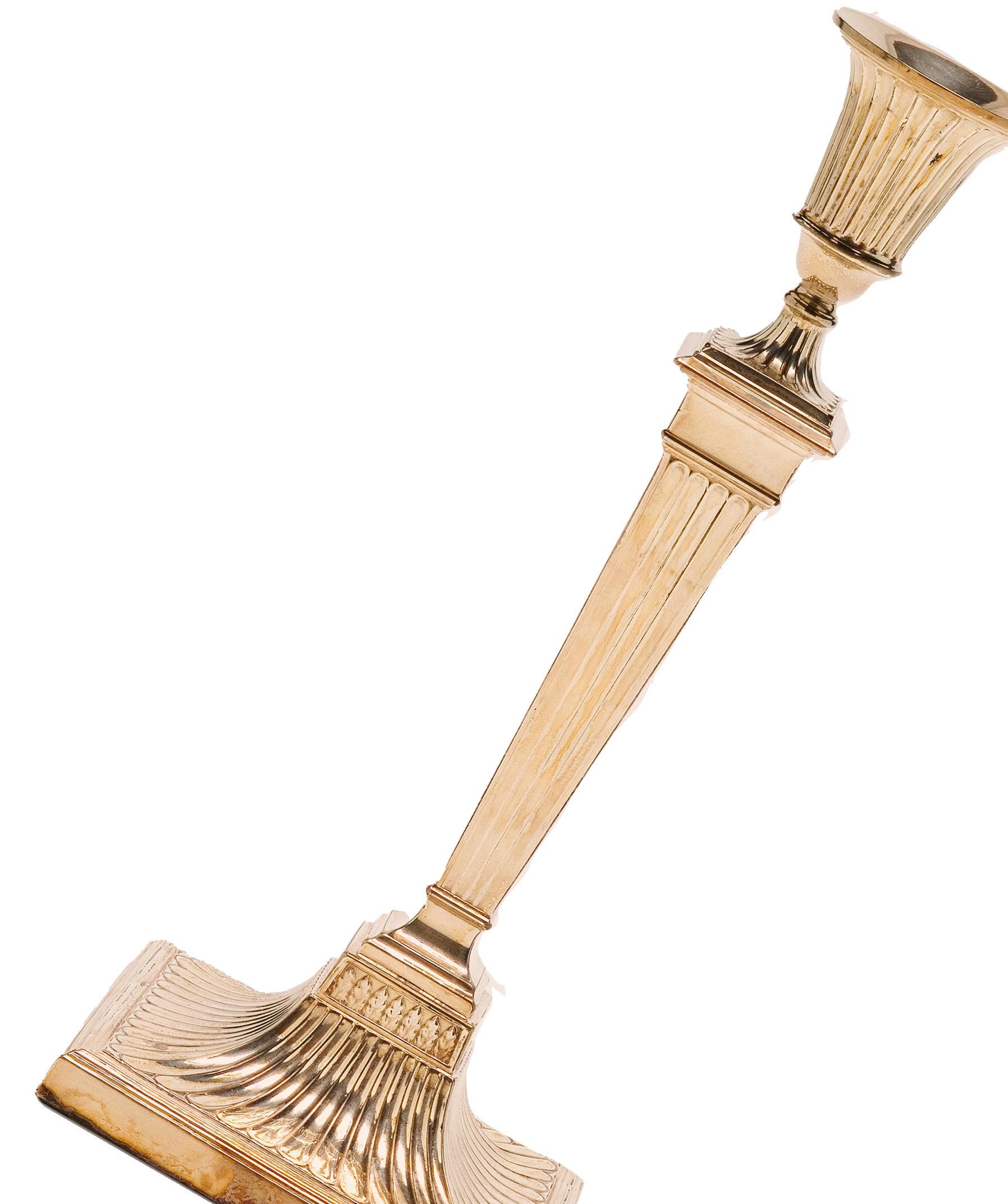



Produced by Grace Ki Rivera ’26
Aggie Rigo Saitta ’26
Photos by Ryan Goodman ’25
Design by Emelia Marshall ’25


Nathan Birdwell ’27
Colonel Mustard
Stone Fisher ’26
Mr. Green
Sanjoli Jain ’25
Mrs. White
Ellen Keys ’25
Mrs. Peacock
Alice Pigelet ’26
Professor Plum





From high school class songs to her first solo EP, Yasmin Kudrati-Plummer ’28 uses songwriting as a tool for emotional release and self-expression. Continue reading to learn more about her writing style, her performing acumen, and what’s next in her young and promising career.
Warning: This article contains language that may be triggering or difficult to readers who are experiencing or have experienced intimate partner violence or other forms of sexual assault/abuse.
At 12 a.m. on Aug. 17, 2024, Yasmin Kudrati-Plummer ’28 released her first solo EP, “STAINED.” Produced entirely from the singer’s bedroom, “STAINED” includes the original songs “Tears Drown in the Rain” and “Battered Wings.” To Kudrati-Plummer, music is a diary-like form of creative expression. In “Battered Wings,” it’s also a medium for telling her story.
“‘Battered Wings’ is about the healing process of assault,” Kudrati-Plummer explained.
She had spent a year and a half thinking about writing the song before she finally did. Unsure of how to write it, she describes the experience of sitting down at the piano for the first time to craft the story.
“What can I use as a metaphor?” she wondered. “The first word that popped into my head was ‘butterfly.’ ... I wrote it in an hour, and it was done. All of the lyrics just fit the way I wanted them to, and it felt so right. This is my favorite song I’ve ever written because I feel like it has a process of growth in it.”
In “Battered Wings,” Kudrati-Plummer sings, “Learning to fly again/Learning to try again/It once was easy/But now I fall.” Later in “Battered Wings,” these lyrics shift to “I was broken/But I can heal.”
Although Kudrati-Plummer was still in the process of recovery from her assault when she wrote the song, she said, “I thought about someone else listening to that song, and [thought] if I don’t add an element of hope to it, then it feels like there’s no hope. And I knew there was hope, like deep down. I knew something could change. I knew that it was possible.”
Kudrati-Plummer mentioned feeling mixed emotions about the topic of “Battered Wings” in the days before the release.
“It is hard for me to put myself out there in that way,” she said. “And I don’t mind doing it, because I know it’s really important that we have people speak, or even write music, on that subject, because it’s something that’s not talked about enough.”
“The song definitely was a really, really big step in my healing process,” she said. “And I think releasing it [was one] as well, because it was my ability to share what happened to me ... That’s one of my goals. I want to do as much work as I can regarding sexual assault awareness and support.”
She added that she hoped her song could provide support to other survivors. “I can heal, and I am healing,” Kudrati-Plummer said. “I think, nonetheless, there is always going to be a part of me that is not fully healed from it, because it’s really hard to fully heal from something like that.”
Kudrati-Plummer also explained the meaning behind the name “STAINED.” It takes inspiration from the lyrics in “Tears Drown in the Rain”: “Spent the last twenty minutes with tears down my face/ Makeup so runny, my face is left stained.”
“I wanted to use a word from one of the songs that matched the two,” Kudrati-Plummer explained. “Both songs are about being stained by the impact of other people.”
Kudrati-Plummer decided on the name for her EP after the photoshoot for its cover, but the word “STAINED” clicked perfectly with the photo she selected. The EP cover depicts Kudrati-Plummer lying on the ground with wings behind her. The wings were created by pouring water onto her driveway — essentially “staining” the pavement. For the photos, Kudrati-Plummer donned teary make-up, made herself cry, and completed the aesthetic with a wet-hair look.
Kudrati-Plummer worked closely with her friend and photographer Gabby Dela Rosa throughout the entire process.
“It was ... such a wonderful experience ... You know when you get a bunch of photos, and you’re unhappy with, like, 90 percent of them? I was happy with 90 percent. She did an amazing job. I was so impressed by her,” Kudrati-Plummer said.
The main collaborator on “STAINED” was her producer, Kai Wang, who is currently studying composition at Stanford. Wang and Kudrati-Plummer initially met working on their “class song,” a homecoming tradition at their high school. They began the production process of “STAINED” the summer before their junior year. After winning a composing competition, Wang immediately spent the money on a microphone the pair used to produce the EP. Initially, they had trouble using the equipment to achieve the best sound.
“We recorded “Tears Drown in the Rain” first in junior year, and then we re-recorded it all this summer ... because we figured out how to use the mic better,” Kudrati-Plummer explained. In the new version, the vocals have an evocative fullness.
She went on to say how she was happily surprised when the duo’s visions differed. She described Wang adding synthetic drums to “Battered Wings.”
“I was like, ‘Do I like that?’” Kudrati-Plummer said. “And then I was like, ‘Holy s—! I love that!’”
After over a year of work, the EP was finally ready. Kudrati-Plummer said people were immensely sup-

your song! I really liked it!’” she remarked. “It was really nice to see that people listened.”
Kudrati-Plummer’s music experience extends beyond “STAINED.” Throughout the summer, she did street-performing, or “busking,” in the DC area. For Kudrati-Plummer, busking opened a doorway for getting gigs.
She was performing with an instrumentalist on the Wharf when the owner of the nearby Yacht Club overheard the music and approached the group with a job offer. Kudrati-Plummer and her fellow musician were eventually kicked out of the Wharf (due to anti-busking rules) but not before the restaurant Kirwan’s offered them a gig as well.
“Once [you] start gigging, you get so many opportunities afterward, because ... you become a local musician,” Kudrati-Plummer explained.
Disappointingly, she had to sacrifice some of the momentum she had gained in the DC area when summer ended. However, Kudrati-Plummer has plans to continue busking in Williamsburg.
Already, music has played an integral part in Kudrati-Plummer’s experience at the College of William and Mary. While running for Class of 2028 Senator, she promoted her campaign with a song on Instagram, working with her friend Maya Meehan-Ritter on the lyrics. She also plays in a band called Corduroy Street.


The final EP coer for “STAINED.”
“Basically, I wrote a song in a piano room with my two friends, and they helped me with the lyrics ...
And so I was playing it [in my hall],” she said. “I was like, ‘Guys, I want to show you this song I wrote,’ ...
And then I was like, ‘Oh my gosh, David. You sing.
You start singing ahhhs’ ... And then very slowly, different people kept hearing and coming down, and I was like, ‘Do you guys play an instrument? Do you guys sing?’”
With Kudrati-Plummer directing, the group rapidly grew, with people towing their instruments or simply bringing their voices to join.
Reflecting on that experience, Kudrati-Plummer smiled. “That is the best feeling ever, like, seeing your music come to life.”
Kudrati-Plummer advises other young musicians to keep taking lessons and learning.

“Training is really important,” she said. “Don’t undermine the value of it, because even if you don’t realize that you can get better, you always can.”
Kudrati-Plummer has big plans for the future. During her time at the College, she is going to focus on making connections and more music. Eventually, her dream is to go to New York or Los Angeles and break into the music industry.
“STAINED” marks the beginning of her music career but certainly not the end of it. So, keep an eye on TicketMaster — Yasmin Kudrati-Plummer is going places.

Story by Grace Ki Rivera ’26
Design by Jordan Lerner ’25
Summertime hits tend to have just as much staying power as songs released in any other season: They shine brightest when debuted and fade, like most fads, when the season concludes. Summer 2024, however, feels different. Grace Ki Rivera ’26 explains why the music of summer 2024 has a greater staying power.

Summer 2024 was defined by music. Artists dropped tracks perfect for all occasions, from the infectious beats that pulsed through beach parties to the mellow melodies that echoed during late-night drives. While each of these artists carved out their own space in the music scene this summer, what made the music scene of summer 2024 truly remarkable was how diverse the influences were. Pop, country, folk, and experimental sounds coexisted, reflecting the varied experiences of listeners during a season of change.
Many artists who dominated the charts didn’t just create songs for the moment — they shaped the cultural conversation of today. Whether it was Sabrina Carpenter’s empowerment anthems, Gracie Abrams’ emotional reflections, Charli XCX’s pop experimentation, Billie Eilish’s quiet intensity, or Zach Bryan’s heartfelt storytelling, these albums connected with fans on a deep, personal level.
Ultimately, the music of summer 2024 transcended the normal course of seasonal trends. I humbly present five songs released during this time that completely changed the game. These tracks not only captured the spirit of the season, but also pushed musical boundaries, influencing trends and leaving a lasting impact on the industry. Whether it’s through bold production choices, powerful lyrics, or unique collaborations, each song offers something fresh and exciting. These are must-listen tracks that should be on your playlist long after summer ends.
Released in July, “Juna” came at the perfect time, right as we were eagerly awaiting Sabrina Carpenter’s Short n’ Sweet and still buzzing from Charli XCX’s brat. Clairo’s Charm, her third studio album, broke new ground with “Juna.” It blends R&B vibes with her usual indie-pop, giving us soft, layered melodies that make you want to escape reality for a bit along with subtle beats that keep it grounded and relatable. This delicate balance between dreaminess and realism sets this track apart, proving Clairo’s ability to innovate within genres and push modern pop music forward.



It might have been “brat Summer” for the masses, but for me, it was “Soup” Summer. Remi Wolf’s track, “Soup” from her latest album Big Ideas, became a personal anthem for the season. It is a balanced blend of chaos and charm with its funky unpredictable energy and playful lyrics, melding genres and embracing quirky, experimental vibes without losing its infectious groove. It’s the kind of track that breaks away from the typical, making it a must-have on any playlist.

One can’t deny that brat changed the game. You couldn’t step outside without hearing a track from brat, and my feed was constantly flooded with people doing the “Apple Dance.” The mix of Charli XCX and Lorde’s fiery dynamic, paired with that futuristic hyper-pop edge, brought something completely fresh to the table. It wasn’t just another summer album — it felt like a shift in the music scene. The theme of “working it out on the remix” doesn’t just fit a moment; it’s a mindset. It transcends seasonal trends, offering a message we can all carry with us.



“Please Please Please” by Sabrina Carpenter is a fantastic addition to any playlist because it goes beyond music trends and resonates on a deeper level. This track not only highlights her evolution as an artist but also showcases her knack for blending a catchy pop sound with meaningful lyrics. It’s a joy to listen to, all while the relatable themes of longing and validation speak to universal experiences. Its upbeat energy ensures it fits seamlessly into any setting, whether you’re at a summer gathering or just need a pickme-up during a gloomy day. By capturing both the fun of pop music and the depth of personal reflection, this song solidifies its place as a timeless favorite that listeners will return to long after the season ends.
“BIRDS OF A FEATHER” is an absolute gem that deserves a spot on everyone’s playlist. This track effortlessly blends a vibrant melody with relatable lyrics, capturing the essence of friendship and connection. The upbeat rhythm makes it impossible not to groove along, while the heartfelt message can resonate with anyone. The way the song captures the joy of finding your people and celebrating those bonds is nothing short of magical. It’s the kind of track that can instantly lift your spirits, making it perfect for any occasion.

We asked Flat Hat Magazine Staff about the songs that make them want to solve a case. Readers are encouraged to put this playlist on and get to the bottom of it.

Where the Streets Have No Name - U2
It has so much emotion behind it and a lot of the song works to create an atmosphere of mystery. It puts me in an almost exploratory mood that I think encapsulates our theme very well. ~ Andrew Johnston ’25


Cigarettes Out the Window - TV Girl
It’s a strange song with a lot going on, much like how a mystery feels before it’s been solved. It sounds a bit like an old mystery movie is playing in the background, and there’s the whole Liddy storyline where she disappears... or does she. ~Anna Harrington ’26
Secret - The Pierces
Though I’ve never seen Pretty Little Liars, the show’s theme song, “Secret” by The Pierces, talks about, well, secrets and nothing makes me more curious than a secret I know nothing about. ~ Portia Dai ’26
Setting the Trap instrumental (Home Alone) - John Williams
Something about the nostalgia, built up excitement, and John Williams’ brilliance makes me want to set up a board with pieces of evidence and red string. ~ Sophia Kaisermann ’27






Back to Black - Amy Winehouse makes me want to solve a mystery because of its dark and dramatic tone, which is perfect for suspense. The song alludes to infidelity which sets a scene of anger and sadness that Winehouse sings about. Thus, creating even more desire to find the culprits who continue to break hearts across the town. ~ Sofia Hurlbert ’28
Know
This song just exudes such sinister yet playful vibes-- It really makes you want to solve a mystery! ~ Hannah Reid ’28
It Again - Steely Dan
Any time the beginning of “Do It Again” plays, I feel like the theme song from Law and Order is about come on. It’s ultra mysterious — I feel ready to move through the streets of New York City and take down a serial killer. ~ Rebecca Altman ’25
no body, no crime - Taylor Swift

Taylor Swift couldn’t prove it, but that doesn’t mean I don’t want to try. ~ Leah Kohler ’28 WHAT DID SHE DO TO HIS MISTRESS. ~ Jordan Lerner ’25 I think its self explanatory ~ Molly Drew ’26

Hypnotized - F leetwood Mac.
It’s fitting since this song is off their album, Mystery to Me. The song is shrouded in mystery as we hear the narrator’s account of being enamored with this incredible entity. It has everything you need to get you feeling like Nick Charles: a jaunty tone coupled with a steady beat, and of course, we can’t overlook the soft, smoky timbre of Bob Welch’s voice. If I want to solve a mystery this song has to be playing! ~ Grace Ki Rivera ’26












Story and Design by Leah Kohler ’28
From vehicles crowding the streets to scaffolding climbing up the walls, the looming presence of construction at the College of William and Mary is impossible to escape. It leaves students frustrated, as the campus they chose for its beauty and historical charm is getting overtaken by building materials. But what is the light at the end of the tunnel? What do they have to look forward to in the coming years?

spaces on campus.

Currently, the College is in the first of four phases of a 10-year project to renovate or replace 80% of all campus living and dining facilities. Phase one is slated to be completed by the fall of 2025 and has an estimated cost of $234 million. While phase two is still being planned, it is expected that construction will begin at the culmination of phase one.
Now, let’s do a rapid-fire overview of what you can expect when you step onto campus next fall. West Woods 1 will come with the ability to house 935 students and feed even more. Jamestown East, another residence hall, will be able to house 269 students and will serve as the final side of the triangle in which Lemon Hall and Hardy Hall reside. Regarding academic buildings, ISC is

As for why the College decided to renovate, there is no shortage of reasons. For administrators, a major concern is the appeal of housing and dining facilities to prospective students. As stated in the publicly-viewable Housing & Dining Facilities Plan, “Along with enrollment increases, the University is continuing to attract a high-caliber student population, demonstrating the institution’s need to ensure a high-quality student experience to compete with some of the nation’s premier colleges and universities.”


It’s no secret that many of the facilities are insufficient for students. Most notably, the lack of air conditioning in many freshman dorms causes an uncomfortable environment, especially with Williamsburg’s warmer temperatures in the early fall and late spring. Additionally, there is a large standard deviation in room size. In Barrett Hall and the Bryan Complex, residents can expect an average of 10 square feet per bed while in Tribe Square, the average is closer to 100 square feet. As a result, the College is starting to lose more and more students to off-campus housing. Not only that, but it is at a


competitive disadvantage compared to many other schools in the area. The residence halls are not the only source of complaints: In a recent student survey, only 37% reported satisfaction with the dining services.
While there are a variety of other reasons that revolve around student grievances, there is another reason that I find particularly interesting: the harsh disconnect between Old Campus and New Campus. However, in order to understand what’s changing, we first need to understand the history of the campus.

The College remained small for the first 200 years after its charter in 1693, but in 1906, it received financial support from the Commonwealth of Virginia to expand. Charles Robinson and Charles Gillette developed the first comprehensive plan in the early 1920s that was based on the design of the Chelsea Hospital, a retirement and nursing home founded in 1682 for veterans of the British Army. Buildings were to form a three-sided quadrangle
around the Sunken Gardens. They used similar size, scale, and materials as the Wren Building to maintain continuity but also to cement the historic building as the figurehead of campus.
In the 1960s, the campus faced another large shift: It began to spread to the west. With this expansion came designs that rejected traditional references, leaning into Modernist principles instead. From then on, the two areas of campus have been seen as separate entities, and little has been done to reunite them — until now.




A group of architects for the College came together and created a set of design principles upon which the new projects would be based. The goal was to develop a smooth transition between old and new while still maintaining the traditional appearance in the wider Williamsburg community.
When being designed, each project was given a designation: most traditional, less traditional,








traditional/transitional, or transitional. Most traditional refers to the style of the buildings surrounding the Sunken Gardens. They have simple shapes that tend to be squares, rectangles, or barbells. They also have sloped roofs and a symmetrical elevation. A less traditional designation allows for slightly more interpretation, with larger footprints and a wider variety of elements. Traditional/transitional buildings aim to blend traditional and modern. While they are not necessarily 18th- and 19th-century gothic architecture, they feel cohesive. The last designation, transitional, refers to buildings that have highly individual footprints and elements while remaining connected to the rest of campus.
In this phase of projects, Jamestown East will have a traditional/transitional feel. Its footprint will match that of Hardy and Lemon, but its design elements will still have an 18th- and 19th-century feel. Because of its location on Jamestown Road,
it will be designed in a way that maintains the College’s traditional presence in the community. West Woods, on the other hand, will be much more transitional as the campus expands to the west and designers can have a greater sense of creative freedom.
While we have to wait until August to see the final results of phase one, the plans are promising. Though this is only the condensed version of construction plans, there is plenty more information available to anyone who is interested on the website for the Office of the University Architect.


One large question remains: Will this improvement plan lead to the demolition of Boswell? Students would like to hope so, but only time will tell.




Mockups courtesty of VMDO
Architects and Goody Clancy





Story by Flat Hat Magazine Staff
Design by Emelia Marshall ’25
I have so many fond memories on that dock and it was a core part of the Botetourt experience.
Magazine Staff revealed their favorite nicknames for places on campus. How many do you know?

The Grimdell
The super yucky pond behind Sadler. Bozzie Boswell!
McStreet
McGlothlin-Street Hall - it’s gonna happen, guys. I swear!
The Pxssy Garden
The little pathway between Jeffeson and Ewell...

Story by Peerawut Ruangsawasdi ’26
Design by Leah Kohler ’28
Read on for the tale of one man’s brave journey into the world of Dress to Impress.
I first became aware of Dress to Impress through an article in The New York Times. Having put off reading the article for another time, I walked into the Flat Hat Magazine meeting with minimal knowledge of the game. I had only seen Katie Fitzgerald play it five minutes prior.
Little did I know, I was about to embark on a Roblox journey like no other.
Dress to Impress is a game where you have five minutes to dress your character up according to the theme. Then, players in the round vote on who has the best outfits, and the people with the most votes win. It’s a light-hearted game that allows you to showcase your fashion creativity.
It took me a little while to figure everything out, which made me feel a little stupid, but eventually I

learned how to change my character’s body type, skin tone, hair, and more. I must admit, I don’t spend a lot of time thinking about fashion or women’s clothing, so I struggled a little bit at first. There was definitely a learning curve.
Here’s the deal, though: The game was tremendously enjoyable. It did get a little bit repetitive after a few rounds, but it was still a relaxing and enjoyable experience.
“I heard of DTI over the summer through [platforms] like TikTok and Instagram, and I had a few friends who invited me to play. I created a Roblox account when I was around 10 years old in 2014, but I stopped playing regularly when I was 1213.I would only play on occasion with friends after that,” Adelien Velasquez ’27, a fellow DTI player, told me about her experience with the game.
That definitely took me by surprise. I am chronically online and came across memes of people doing “Pose 28” from the game — pushing your pelvis forward as you lean back. Yet, I never connected the dots.
I kept playing, but struggled to make headway. I finally leveled up after semi-successful rounds where I got lucky. Trust me, the amount of time and thought I put into those outfits did not matter: The result was simply luck.
What struck me the most about the game was its professional design. The music — though I believe is just a looped soundtrack — is high-quality. I did turn it off after a while because I got tired of it, but it was not bad at all. The set looks great and optimization works flawlessly. It was hard to believe that it was a free Roblox game. Indeed, your character doesn’t even look like your typical Roblox character.
“What I like about DTI is seeing others’ ideas on a theme. I love when people incorporate pop culture allusions into their outfit, especially when it is funny,” Velasquez said.
I definitely agree — it’s always funny to see one group of players interpreting a theme, such as “one with nature,” as being on a safari, while the other interpreting it as Mother Nature.
Sophie Hyatt ’26 pointed out another one of the game’s benefits.
“It is really fun and a good activity for students with long distance friends,” Hyatt said.
This has always been an advantage of Roblox . As the game is free and requires very low specs from your computer, it’s not too difficult to coordinate a few rounds of Roblox games with your friends. But with DTI and its broad appeal, this is even more evident.
“It is really fun and a good activity for students with long distance friends,” Hyatt
said.
How broad is this appeal, you ask? Well, James Charles has made several videos dedicated to the game, while popular British singer Charli XCX worked with the game’s developers to release brat-themed clothing. Talk about brat summer.
After a few rounds of playing, I had the ridiculous thought, “Man, this game needs some lore!” And little did I know ... DTI is full of lore.
I wouldn’t be able to do the lore justice, so I won’t go into much detail. However, I will say that, as of writing, there are at least four games dedicated to DTI lore, as well as ten videos that have been released over the last five months. It’s reached the point where Game Theory made a video about it.
The lore is quite extensive. It centers around the “nail lady,” Lana, being trapped in or joining a cult. It is currently quite unclear. What I know is this: it’s bizarre and terrifying, but hilarious at the same time.
The spinoff games I mentioned earlier? They’re nothing like the cute runway simulator that DTI is. Instead, they’re horror mystery games, where the screen is all red 100 percent of the time.






I can certainly respect the quality of the game, considering many developers are young and in school. The game’s owner, Gigi, is only 17. She said she was 14 when she started working on the game. Unfortunately, due to recent criticisms over her past online comments and behavior, she is taking a hiatus from game development, handing it over to a group of developers.
Five Nights At Freddy’s-esque qualities aside, DTI marks a refreshing Roblox experience unlike any other game. It has a great community of enthusiastic fans — over hundreds of thousands of people play it every day, not to mention its very active Discord server.
DTI is truly an enjoy-

able experience. Sure, it gets repetitive, but the lore and the vast inventory of clothing options keep the game interesting. I will be aiming to level up even more in this game and keep following where the story of Lana takes us. In the meantime, I encourage you to join me on the runway, as does Velasquez.

Peerawut’s Winners


“I would absolutely recommend it to people, especially if they are creative and competitive,” Velasquez said.
I don’t know if I’m creative, but I’m definitely competitive. What better way to kill time between classes than fight other people for the top spot on the platform?



































Modeled by
Hannah Montalvo ’25
Manav Kapoor ’25
Rob Hochstetter ’25
Fabi Corso ’28
Produced by
Grace Ki Rivera ’26
Hannah McMinn ’26
Richa Verma ’26
Photos by Ryan Goodman ’25
Design by Andrew Johnston ’25


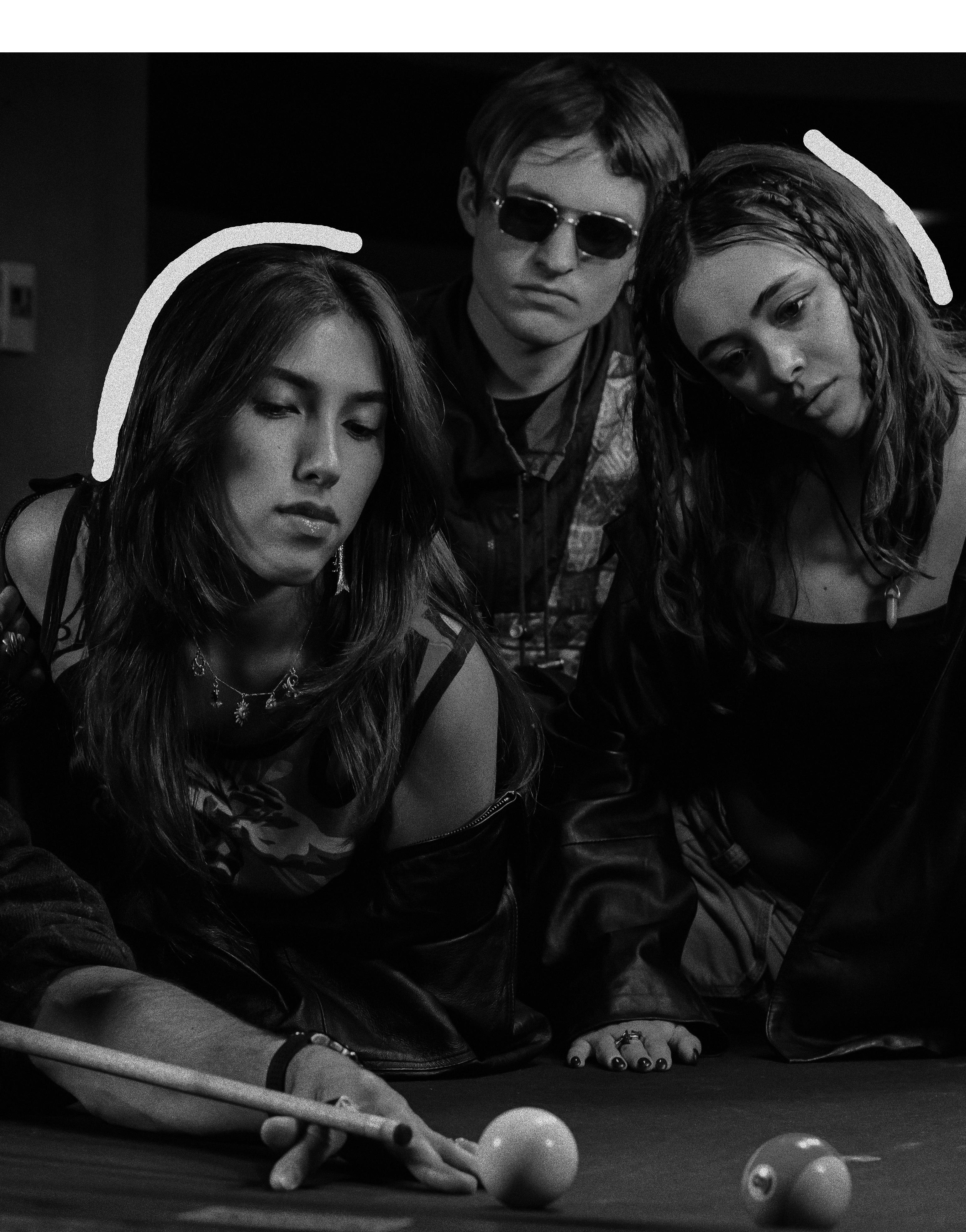



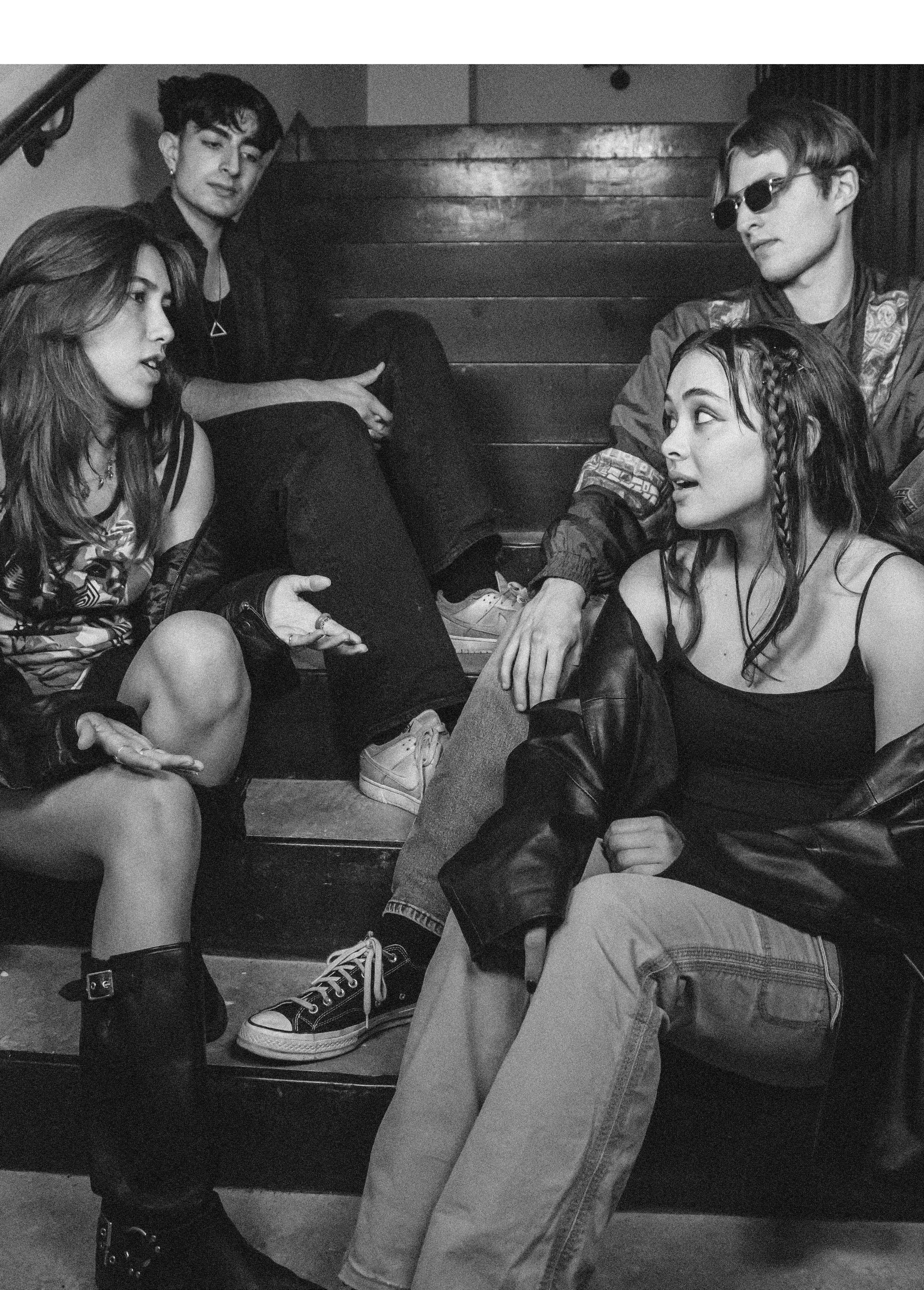






Have you ever encountered someone with an impeccable sense of style, a cool attitude, or a unique charm about them? We wanted to capture that essence via the elusive cool individual shoot. Our goal was to portray a balance between confidence and enigma, framing a story that sparks curiosity. We aimed to leave the observer captivated, unable to look away.
-Grace Rivera ’26










What draws someone back to their “comfort” show? And why can’t reboots of our favorite programs recapture the same magic as the originals? Caroline Page ’26 highlights these feelings — and reminisces about Gilmore Girls along the way.

Article and Design by Caroline Page
’26

It’s that time of year again: When I enter Trader Joe’s, I am greeted by the grinning jack-o’-lantern of every pumpkin product, and I stop to smell cinnamon instead of flowers. The trees’ leaves shed their green, opting for a fall-toned, filter-esque foliage. When I click the kettle to make a warm drink and preheat the oven to bake an apple cinnamon spice “something or other,” I know I will soon select a show following the “duhdun” of Netflix loading on the TV. Of course, I turn on nothing other than Lauren Graham and Alexis Bledel’s quick witted lines that I have memorized from my fall tradition of watching Gilmore Girls While I sip peppermint tea, I feel at ease watching Emily and Lorelai Gilmore fight yet again at their famous Friday night dinners. But why do I find such comfort when I hear the show’s theme song, “Where you Lead, I Will Follow” by Carole King, once more?
Goldfarb emphasizes that social instinct predates modern culture, and therefore our connections to fictional characters parallel those of the real world. These “parasocial” relationships provide a sense of community, and consequently, a sense of comfort.

Why do we find solace in a show we watched for the first time years ago? There are psychological factors that contribute to our desire to revisit plots and characters we know so well. In fact, there are potential benefits from it. Although I would usually argue that it is the sets, clothes, and fall colors in Gilmore Girls that persuade me to hit play on yet another trip through the series, it is also the mental comforts rooted in watching something I have seen before.
Some might claim that a second viewing of a show allows one to discover the details gone unseen. This would be a likely argument made by film buffs and ardent fans, but psychologists suggest additional reasons for a renewed viewing of a show. Anna Goldfarb discusses research done by professors of psychology Shira Gabriel and Jaye Derrick in her Time magazine article “Why Rewatching Your Favorite TV Show Is Good for You.” Gabriel’s research centers on humans as social creatures, drawing connections between TV and the innate human desire for a sense of belonging, which prompts us to watch shows like Friends over and over again.
Goldfarb goes as far as to argue that another viewing of your favorite show not only provides solace, but also can leave you feeling “restored.” Derrick’s research proposes that after people perform a strenuous task, they tend to search for a friendly fictional world and are often left feeling replenished. Derrick describes the ability to make choices as a scarce resource, resulting in the desire for familiarity as a relief from the exhaustion of decision-making. Therefore, after a day full of decisions, we reach a threshold where we tend to gravitate toward our tried-and-true Netflix favorites.
Goldfarb recognizes the sense of community we find through the relationships we make with the characters on-screen but neglects to mention the friendships found off-screen.
Avid fans dedicate their time to viewing a show more than once to connect with the community. Consequently, they begin to consolidate their opinions about the fictional world. I have participated in many haughty debates about who Rory’s best boyfriend was: Dean, Jess, or Logan. (Although I’ve always had an affinity for Logan Huntzberger, Jess’ confrontation with Rory with his well-known line — “Why did you drop out of Yale!?” — always brings me closer to the Jess fans). Debates like these give way to subcultures within a fandom, and more specific groups can function as identifiers of shared opinions and values. If others agree, a subculture forms, furthering a sense of belonging.
This psychological explanation of why we gain comfort in rewatching our favorite shows explains the cause for failed reboots. Reboots require us to make judgements about character developments or analyze discrepancies from the original narrative. The extra attention required proves to be more strenuous than going back to the untouched version of the past.


Stanford researchers featured in Elizabeth Kolbat’s article from The New Yorker provide reasoning for the strain in viewing a remake. In the article “Why Facts Don’t Change Our Minds,” Kolbalt highlights key psychological concepts surrounding the influx of new information. The researchers state that “once formed, impressions are remarkably perseverant,” an idea applicable to the world of TV show reboots. Physical and behavioral differences in fictional characters in a remake forces the audience to reassess their judgements. This not only fatigues loyal viewers but creates discomfort for them if a character does not act in accordance to the viewers’ expectations. Character discrepancies can result from the maturation of the actors, the inaccurate recreation of the set design, or even new writers and directors. Therefore, the reboot parallels the failures of a poorly adapted film. It is incomparable to the original. For that reason, many fans might stick to rewatching the original seven seasons of Gilmore Girls and fail to acknowledge the developments in the mini series created almost a decade later. The idea of the reboot reinforces that humans desire to find comfort in the known. Therefore, opting for a show you have seen before provides the solace many need at the end of a long day. The comfort in a rewatch can rival one’s time to consume new media, but the mental break is restorative. This proposes a nuanced way in which TV can be beneficial to mental health.


This duality of the perfunctory nature of television serves as a reminder to reflect on one’s consumption.
It is important to check in with yourself and ask: “do I want to relax, or do I want to learn something new?” Sometimes, it might just be the necessary mental health break to watch Rory Gilmore walk on screen with “There She Goes” by The La’s playing in the background.


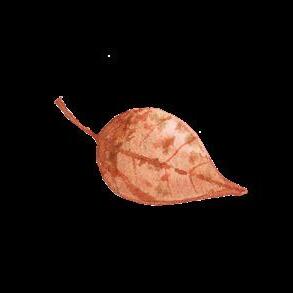


Story by Peerawut Ruangsawasdi ’26
Design by Jordan Lerner ’25
Colleges are routinely rated by a number of studies and rankings. U.S. News and World Report, arguably the most prominent source for college rankings, put the College of William and Mary at #54 in National Universities this year. Peerawut Ruangsawasdi ’26 explores other changes within the College that may have a measurable effect on its national reputation.
The College has been the subject of numerous studies and rankings this year. U.S. News and World Report, for instance, put the College at #54 in National Universities this year, marking a one spot decline from last year’s ranking of #53. But apart from this, what are some other metrics the College is facing recently? How is the College trying to improve its national profile?
For starters, the College is facing some significant changes this year. Over the summer, Jane Batten HON ’17, L.H.D. ’19 donated a historic $100 million to establish the Batten School of Coastal and Marine Sciences. This move comes as the College prepares for the establishment of an undergraduate Marine Science major.
On the other hand, the College is also ramping up its new school of Computing, Data Sciences and Physics. The move was approved by the State Council of Higher Education in Virginia (SCHEV) in July 2024.
“I appreciate SCHEV’s shared commitment to preparing broadly educated, forwardthinking citizens and professionals,” College President Katherine A. Rowe said in a W&M News piece. “The jobs of tomorrow belong to those prepared to solve tomorrow’s problems. Machine learning, AI, computational modeling — these are essential modes of critical thinking and core to a liberal arts education in the 21st century.”
As a part of that effort, the College added a new dean to the roster. Douglas C. Schmidt ’84, M.A. ’86 was announced in October 2024 as the first dean of the new school. Schmidt serves as a senior advisor at the United States Department of Defense and was associate chair of Computer Science at Vanderbilt University.
While many find appeal in the College’s relatively small size and emphasis on the humanities, recent institutional actions have trended in other ways. For example, in its final report, the steering committee tasked with
studying options for the new CDSAS school published its final report in June 2023. In it, the committee, chaired by the dean of the Faculty of Arts and Sciences, Suzanne Raitt, described students expressing concerns over how the new school would impact classes in the humanities.
“Students are concerned about how the creation of a new school will change their overall experience at W&M (including tuition, class offerings, and access to CS/DS/AS courses by the general student population, and course offerings in other departments in the humanities and social sciences),” the committee wrote.
Regardless, the committee concluded that most faculty members were excited for the move, believing it would attract more distinguished faculty, attract external funding for research, and improve the College’s national profile. The committee described, though, a desire for the new school to provide ways for students and faculty to interact with it in multidisciplinary ways.
These are just some ways that the College is looking to improve its national profile and elevate its standing. A part of this profile deals with branding, too. Many students refer to the College as “the College,” including The Flat Hat and Flat Hat Magazine. The College’s branding guidelines, however, require employees to refer to the institution as a “university.”
“Our status as a university materialized just three years after the signing of the Declaration of Independence; I don’t feel particularly compelled to start changing how I reference the College when we’ve been making things work just fine since then,”
wrote Ethan Brow, former editor-in-chief of The Flat Hat.
Ever since 1996, the College has had a general downward trend in terms of rankings. Despite some improvements, the College’s rankings overall are down.
“Rankings matter because people we care about — prospective students and alumni — care about them,” wrote the College in a document titled “BOV Rankings Deep Dive.” “For this reason, analysis of rankings formulas is a routine part of W&M leadership’s work as we steward the university’s reputation and scan our competitive environment.”
One last set of changes that deserves your attention this year are those being made in terms of student restorative practices and student expressions. For example, the College eliminated the Dean of Students’s Office, revamped the Appeals Board process, and revised the Student Code of Conduct. The changes also include a slightly more detailed description of disruptive behaviors such as an added section regarding guest speakers at the College.
“Attempting by physical force to cancel or discontinue speech by any speaker, or the obstruction of speech by any person intending to see or hear a speaker,” the new handbook states.
The move comes amidst colleges around Virginia and the country making similar changes at their institutions, which advocates and others describe as unprecedented. 2024 is truly a year of change for the College and the country. Let’s see where that takes the nation’s alma mater.


Story by Molly Drew ’26
Design by Andrew Johnston ’25
Some say attending the second oldest college in the United States brings potential opportunities for encounters with those in the afterlife. Molly Drew ’26 highlights the scariest spots on campus and the ghosts you might find there.
Warning: this article contains language that may be triggering or difficult to readers who are experiencing or have experienced mental health struggles.
Do I believe in ghosts? No. Do I want to? Absolutely! Deep down I believe there is probably a scientific explanation for most ghost sightings, but in my opinion, a world with ghosts is much more interesting than a world without. I must admit, despite my personal disbelief, I still get easily scared by horror movies, scary stories, and walking outside late at night. So, if ghosts do turn out to be real, I would hate to have offended them with my disbelief. To brace myself for any ghostly encounters this fall, I decided to do a little digging into the College of William and Mary’s ghost stories. At a campus this old, there are bound to be some thrilling and spooky stories. Ghost stories around campus have been collected by word-of-mouth, YouTube videos, and the “Hauntings at William and Mary” map created
by Margot Baden ’20. This digital map pinpoints places of supernatural encounters at the College from student submissions. Whether you’ve seen a ghost yourself or are a firm believer that ghosts are impossible, our campus certainly has some mysterious and entertaining tales! So without further ado ... brace yourself for the most haunted spots and wellknown ghost stories of the College..
Tucker Hall:
As an English major, I was thrilled to hear I spend most of my hours in one of the most notably haunted buildings on campus. While there is one well-known spirit affectionately referred to as “the Tucker ghost,” there have been various accounts of strange supernatural experiences in the building. I myself have heard strange tapping noises in the bathrooms, which I always assumed to be the pipes, but perhaps it is something more sinister ... The story of the Tucker ghost does involve mental health struggles and mentions of suicide, so reader discretion is
advised. The third floor of Tucker is haunted by a girl who was so stressed by her studies she decided to end her life. The story goes that her ghost will appear to other students on Tucker’s third floor and ask how their studying is going. If they are similarly stressed, her ghost will tell them to follow in her footsteps. The dark background of this story is not one I mean to make light of, and I only include it as it’s the most well-known ghost story around campus. Along with this story, there have been other vague encounters with the supernatural, from flickering lights to a sense of being watched. In my time, I’ve never felt a real ghostly presence, but the red walls in office areas and the third floor are rather terrifying. Actual accounts of ghost sightings that align with the supposed story are very rare, but many have recorded on the “Hauntings of William and Mary” map feelings of an other-worldly presence.
The Sunken Garden/The Brafferton School:
Part of the College’s problematic history includes the Brafferton School, which was created to assimilate Indigenous boys to English culture and ideas. One of the more notable ghost stories involves this school and its pupils. The story is that one of the Indigenous boys successfully ran away from the school, but was later found dead on campus from an unknown cause. Now, on dark and misty nights, rumor has it that his ghost can be seen running across the Sunken Garden. I asked myself: How can we be sure it’s a ghost and not a student on a late-night jog? The boy’s ghost floats off the ground, running where the ground level was when he was alive, before it was dug out to become the Sunken Garden. Some also say the sounds of knocking and scratching can be heard at the door late at night, as more spirits try to escape.
Sir Christopher Wren Building:
One of the College’s biggest boasts is the Wren building, the oldest academic college building in the United States actively in use. More importantly, it is also one of the most haunted college buildings. The building was built over 300 years ago, has caught on fire three times, and stands atop a crypt; it’s easy to see how this would be prime real estate for ghosts. Although the Wren does not have one specific story of a ghost haunting it, its long and unique history gives plenty of possibilities for ghosts and
other supernatural experiences. The building served as a hospital during both the Revolutionary and Civil War, and many have claimed the halls remain haunted by soldiers who died during these times. Some claim to have seen actual ghosts of soldiers late at night, while others have reported footsteps echoing overhead with no traceable human source. The crypt has also been a source of suspected ghost origination. Unfortunately, the distinguished Virginians (R.I.P.) who lie below have not been allowed to Rest in Peace. The crypt was robbed during the Civil War, as Union forces took the valuable items within. Since then, it is not improbable that the crypt has been visited by the occasional daring group of students (or seniors of the Spotswood Society). I say we let the ghosts rest!
Even though the performing arts building has been recently renovated, it has an extensive history of ghost stories. PBK’s main ghost story centers around a girl who was cast as the lead in one of the department’s first productions but died before opening night. Legend has it that one night, while her understudy was rehearsing alone, she saw the dress for the lead character sitting upright in the front row. Rumor has it the dress has appeared throughout the building without explanation ... In addition, the ghost of the founder of the College’s theatre department, Althea Hunt, is known to haunt and cause costume and prop failures for any student who shows her disrespect. Besides these two ghosts, the old PBK had the usual supernatural occurrences: flickering lights, objects moving on their own, shadowy figures, etc. I, for one, would be interested to know how the renovation of PBK has affected ghostly activity. Unfortunately, I can only imagine that having their haunting grounds subjected to heavy construction would not be too pleasing for the ghosts.
Whether you believe the stories or not, attending one of the most historic and haunted colleges is a pretty cool experience. All I know is that even if I’m not fully convinced ghosts exist, I’ll be a little more cautious around these parts of campus. And if you’re still not fully convinced, I recommend at least respecting their stories. After all, better safe than sorry...


The newly renovated Monroe Hall opened its doors in 2024 a century after its original construction. From extravagant televisions to expansive lounges, Clare Pacella ’28 takes a look inside and reports back on what’s new.
When I walk down Richmond Road at night, I crane my neck for a glimpse inside the newly-renovated Monroe Hall. Multiple TVs flicker in the windows, upstaging Bryan Hall basement’s remoteless TV. Originally constructed in 1923, Monroe Hall underwent brand-new renovations beginning in June 2023. After a year-long makeover, Monroe became tenantable the day before the class of 2028 arrived. While Lemon Hall is typically known as the nicest freshman dorm on campus, the $22.1 million Monroe renovations put it to shame. Only Monroe Scholars have the opportunity to live in the building; however, they may opt out if they wish to do so.
All first-year applicants are automatically considered for the James Monroe Scholars Program, and the Office of Undergraduate Admissions selects students who “demonstrate intellectual depth, curiosity,
academic passion, and care for the community.” If admitted to the program, students are eligible for guaranteed summer research funding, priority registration, and the opportunity to live in the newly redone Monroe Hall.
Outsiders, such as myself, clamor for the opportunity to get an exclusive peek into the lives of the Monroe residents. After touring the building and interviewing students, I have returned to report my findings regarding the Monroe lifestyle.
When you first step through Monroe’s threshold, you are greeted by a bare, circular couch and the distant sound of drills whirring. Upon climbing the staircase to the second floor, you are met with a livelier atmosphere. Each of the first three floors is equipped with a lounge accompanied by a kitchen.
When I first stepped into the lounge, I felt like I was about to check into an excessively modern hotel. Available seating consists of a couch, a round table, a few armchairs, and three high chairs placed behind the kitchen island. The building is filled with an assortment of individual study rooms, group study rooms, and conference rooms, all of which are typically occupied.
The bathroom area includes a mirror with two center sinks. Surrounding the sinks are four doors that each lead to individual bathrooms consisting of a shower, a toilet, and a sink. Unlike the stalls in other dorms’ hall baths, privacy is not an issue. The rooms on the first three floors are not unusually large or extravagant. The average double, noncorner room is approximately 195 square feet. The desks are very small, but they do not seem to restrict residents too much. In contrast to the other floors, the fourth-floor dimensions are larger and longer. On this floor, most rooms are approximately 220 square feet. Because the rooms are technically in the attic, the ceilings are slanted, and the windows are limited. The fourth floor is not home to an extravagant lounge, but it does have a kitchen. Although the fourth floor has more space, it has a noticeable lack of natural light compared to the other floors.
Every time I walked into the common spaces during my tour, there were students either socializing or studying together. “I am surprised when I don’t see people out here,” Diggs said. “That is the exact same as it is at 2 p.m. as it is at 2 a.m.” Because of the constant traffic through the common areas, students have formed a tight-knit community of people similar to them. “I actually do not know how we would have formed relationships if it weren’t for the lounges,” second-floor resident Anne Hensley Young ’28 explained. “I think because so many of us hang out here so often to study or work or play, it really has given us a chance to all get to know each other’s personalities and work ethic and the classes that we’re in. If we didn’t always end up congregating in the middle, it would be so hard to develop any of that.”
Not only do the residents of Monroe bond through watching TV or talking in the lounges, but many Monroe scholars also described a specific community full of shared understanding. Young explains that, as Monroe scholars, “We are all really good at something. We really are. And we show up here, and for the first time in our lives, no one’s trying to fight us about it, and we’re actually able to be proud of the work that we do.”
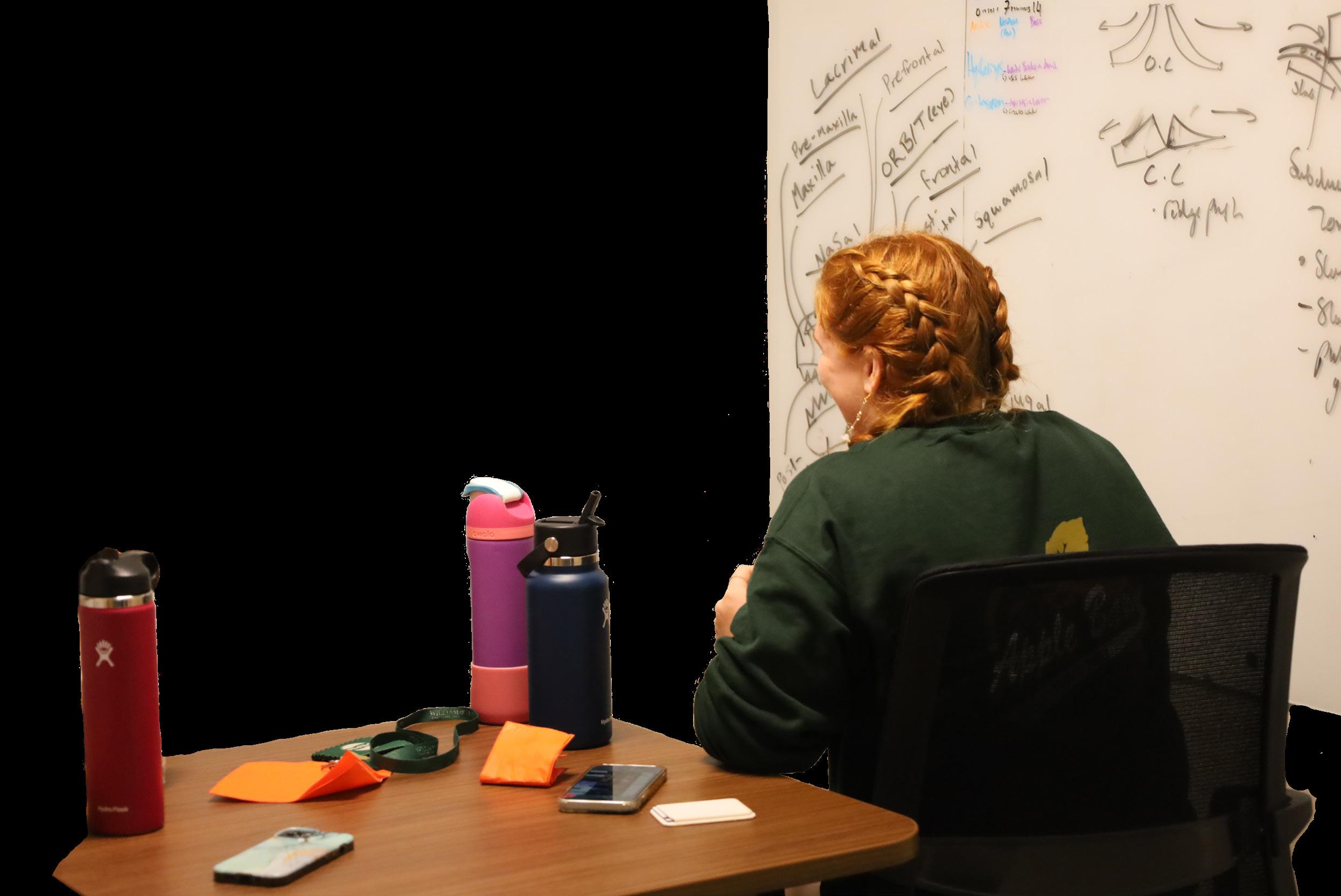

According to Young, while the residents of Monroe might not “trauma bond” over the structural issues of the Green and Gold Village, their bonding took place over similar high school experiences.
Despite popular belief, Monroe is far from perfect. For months, an army of men in neon orange vests swarmed the perimeter of the building. While the building was supposed to be finished before students moved in, the renovations are still in progress. Paint fumes and the sound of power tools constantly fill the building. On more than one occasion, parts of the ceiling fell, and the air-conditioning lacks consistency. In early October, workers began creating a landscape that no longer consisted only of dirt; when they introduced fresh manure to the perimeter of the building as fertilizer, the fumes were far from pleasant. Alongside these
grievances, Monroe Hall faces an ant infestation, but reports of cockroaches remain absent.
While being a Monroe scholar is an honor, living in the dorm itself does come at a higher cost. A double in Monroe Hall costs $566.50 more than a standard double room. Whether or not it is worth the extra money for the boundless amenities and friendships associated with Monroe is up to you. “I think having that access to research and being in a space where everyone else is just as academically minded and focused on research also, I think that that is worth it,” Leah Pearlman ’28 said. “I feel like it’s hard to put a price value on those friendships that have come out of living in Monroe.”


The thousands of jellyfish in the Crim Dell have come and gone and come back again. But why and how? Associate Professor Jon Allen’s research lab has been seeking that answer.
A campus filled with history and tradition comes with boundless tall tales, passed down rumors, and unsolved mysteries. Take the Crim Dell jellyfish, for example. Some say they are real, some say they are fantasy. Some say they return yearly, while others claim they bloom in cycle. Students all over campus have conflicting iterations of the story of the Crim jellies. Let’s get one thing straight: The Crim Dell jellyfish are real. But that’s not where the mystery ends.
This species is called Craspedacusta sowerbii, the only freshwater jellyfish in the world. They are an invasive species from the Yangtze River basin in China, and have spread to every continent, except Antarctica. Their introduction to North America, dating back to 1885, was through the importation of aquatic plants. By sticking to feathers, feet, or fur of migrating animals, the microscopic polyps invade bodies of freshwater. There, they reproduce asexually, creating thousands more. The jellyfish are hydrozoans, meaning they have two stages in their life cycle: The polyp stage and the jelly, or medusa, stage.
The first recording of jellyfish on campus was in 1949, making this year the 75th anniversary of their first spotting at the College of William and Mary. Found by a faculty member at the Virginia Institute of Marine Science in Lake Matoaka, they have been unseen since. Every other finding of the jellyfish was in the Crim Dell, where they have been known to bloom every six or seven years. “In 2019 they started showing up more regularly,” said Jon Allen, associate professor of biology and director of the Allen Lab. “Since then, I think they’ve been here in abundance three of the last five years.”
environment, which has ensured their survival. The Crim Dell has been drained and dredged many times for maintenance, but the polyps and jellies always return. The polyps enter a resting stage that can survive in moist land for 40 years. “You could drain the Crim Dell when you got to campus and not refill it until you were an adult and you had children of your own who came to William and Mary, and then refill it to celebrate them coming to William and Mary, and those jellyfish polyps would still be there alive,” Allen said.
The lab’s current research question is about what causes these blooms. “The mystery, I suppose, is why are they there? In tremendous numbers, like by the thousands in some years and not at all in other years,” Allen disclosed. Figuring out their drives for reproduction is key to understanding the jellyfish’s role in the Crim Dell ecosystem. “When there are these big blooms, and you get tens of thousands of jellyfish in a very small area, what does that do to the native organisms that live there?”

This is the main area of interest for student researcher Savara Shrivastava ’27. “My favorite thing, I think, is to see how they interact with other organisms and try to see, because they are an invasive species, how they’re affecting the community in both stages.” Studying the jellyfish’s behavior is especially exciting because there is a lot of controversy about their interactions with other species. After studying published research, Shrivastava noted, “There’s some literature that suggests that they could be really important in shaping how the plankton community works; there’s some literature that says they might not actually be that important at all.”
When the jellies bloom, like they have this fall, they are only around for about six weeks. Although the blooms are irregular, the polyp stage is always present in the Crim Dell. “Only some years do they make jellyfish, and in all other years, they choose not to, and we don’t understand why,” Allen explained.
The polyps are very resistant to changes in their
Because the jellies are an invasive species, they probably serve as competition against native species for food, so the Allen Lab studies what they eat and how much. Allen noticed the jellies had a strong preference for brine shrimp and other small crustaceans. Watching them prey on the shrimp has provided insight into their stinging abilities. The
researchers drop brine shrimp into a container with the jellyfish, and once the jellies come into contact with the much larger shrimp, all it takes is three seconds before the shrimp is paralyzed and ready to eat. “The efficiency of their predatory abilities is probably the thing I think is coolest,”admitted Allen.
Not only does their powerful sting come into play when the jellies are the predator, but also when they are the prey. Shrivastava took a sample of jellyfish to the Keck Lab and fed them to native vertebrate animals found on campus bodies of water to see how they would respond to the jellyfish. The jellies were first given to turtles, which were passive and uninterested. Then, Shrivastava fed them to fish. “We had a bunch of small fish try to eat it that were about the same size as the jellies ... so they would take pecks at it and then look a little disturbed and then swim away.”
When Shrivastava tried feeding the jellies to catfish, there was a bigger reaction. “We had these catfish that were big enough to swallow them whole, and the catfish would try to swallow them and then spit them out immediately.” The jellyfish stung the catfish internally, which led to “a continuous shaking motion, very erratic movement, heavy breathing ... They were very displeased with eating a jelly.”
Another major question at the lab concerns the jellyfish’s reproduction. This year, the lab found
thousands of jellies in the Crim Dell, all of which were female. Two years ago, during the last bloom, all of the jellies they found were male. The lab seeks to understand the jellyfish’s sex determination mechanism. “We don’t know if ... they need to develop in a certain temperature, like sea turtle eggs where you’ve got temperature dependent sex determination, or is it something where it’s a genetic thing,” Shrivastava said.
Another possibility is that all of the jellyfish in a bloom are clones. A single polyp might have asexually reproduced itself thousands of times, making an entire population of clones with the same genetic material, which may explain why they are all the same gender.
Passing by the Crim Dell, Shrivastava could be seen conducting field work alongside fellow lab volunteers Lexi Dyer ’27 and Sierra Hall ’27. Onlookers stopped to ask them what they are studying and if the jellies really are real or not. Seeing the public’s curiosity about the jellies, the lab started an Instagram account, @crimjells, to share their findings. “You have this really cool organism that so many people around the world are interested in, and it’s right here on campus,” Shrivastava said about expanding the lab’s communication reach. “We think that the community here deserves to know a little bit more about it.”
Being such unique and obscure creatures makes studying them an exciting puzzle. “There are so many mysteries about them, but that’s the whole point of doing science on them, is to solve some of those mysteries,” Shrivastava said. “And as you solve them, you get more questions to ask.”


The sports media world is changing. Years of opinion-based programming, with companies absorbed in this “take” culture, have alienated sports enthusiasts and casual observers alike. Now, spearheaded by former superstars and everyday fans, sports media is heading towards a much-needed overhaul.
Step aside, Stephen A. Smith and Skip Bayless. Your reign on sports media is over.
“Take” culture has dominated outlets like ESPN over the past decade. Mornings are reserved for debating highly contested topics on shows like First Take; afternoons and evenings turn this idea into quasi-game shows like Around the Horn or one-on-one programs like Pardon the Interruption. This shift has resulted in hours upon hours of adults yelling at each other over each other’s opinions, and people are sick of it.
But new categories of sports content emerged during this same period, the two most prominent being what I call “Smart Guy Media” and “Guys Being Dudes Media.” Each has its respective audiences; some programs have significant amounts of overlap between them.
“Smart Guy Media” refers to the television programs, YouTube channels, podcasts, and social media platforms dedicated to the analysis of a particular sport or league. What distinguishes these programs from others are the hosts: Many are current and former players or coaches of high renown. A key example is Peyton and Eli on MNF, where two of the most decorated quarterbacks in the history of the NFL watch ESPN’s showing of Monday Night Football, reacting in real-time with fans and breaking down particularly interesting moments throughout. The hosts bring in an
assortment of celebrities throughout the night, in addition to other professional football players who share their experiences and expertise. The combination of the Manning brothers’ candid and clever showcasing of football genius makes the show enticing for all, whether they are football enthusiasts or not.
A popular figure of “Smart Guy Media” is JJ Reddick, a former NBA basketball player and the newest head coach of the Los Angeles Lakers. He became the first active NBA athlete to launch his own podcast, beginning on Yahoo! Sports in 2016, then moving on to The Ringer in 2017. Reddick started a YouTube channel for his podcast during the COVID-19-shortened basketball season, interviewing different players and offering them a space to be their authentic selves. These conversations grew into The Old Man and the Three, a podcast co-hosted by television producer Tommy Alter. With his knowledge of the NBA and its culture, Reddick got vulnerable with the current and former players he shared the microphone with. He got answers about controversial moments that traditional sports media could never seem to uncover, like why Jimmy Butler lashed out in that Timberwolves practice, or why Ben Simmons acted the way he did towards the end of his time with the 76ers. Through a shared knowledge of competition and sports culture, Reddick created a comfortable space for players to share their stories and for audience members to finally understand their perspectives.
Through a shared knowledge of competition and sports culture, Reddick created a comfortable space for players to share their stories and for audience members to finally understand their perspectives.
Some nerded out with him, too: Reddick always had an analyst’s eye, and the moments when he breaks down a possession with another player are works of pure craftsmanship. These passages led to another endeavor: Mind the Game with JJ Reddick and LeBron James. This podcast was dedicated specifically to those moments of nerdiness and analysis, a space where Reddick and James spend time highlighting the importance of a singular three-pointer or blocked shot. They also have moments breaking down core memories for the two players, allowing Reddick — a perennial role player by the midpoint of his career — to sit beside the greatest basketball player of the 21st century and be open and candid. Both The Old Man and the Three and Mind the Game are on an indefinite hiatus due to Reddick’s new head coaching gig. But the foundation that Reddick laid — a current or former professional athlete forging their way into the sports media world through wit and compassion — is a sturdy foundation for “Smart Guy Media” to follow.
But others don’t want the X’s and O’s approach to sports media; they crave a sense of belonging, even if it’s through their phone or television. Enter “Guys Being Dudes Media,” where the hosts could be your everyday sports enthusiast or trash-talking college hallmates. For better or worse, we have Dave Portnoy and his company, Barstool Sports, to thank for the proliferation of this category. Barstool is a social media and media juggernaut that has dominated collegiate sports culture and the sports podcast realm for the better part of two decades. Self-described as the “Bible of Bro Culture,” Barstool’s products have resonated with its listeners — young adult men, in particular — through engaging Instagram pages and laid-back podcasts. Portnoy veers towards the raunchy, crude, and misogynistic, but Barstool’s impact on sports media deserves to be analyzed.
Pardon My Take provides an excellent point upon which to view “Guys Being Dudes Media.” The
podcast debuted on Feb. 19, 2016 with the intent to satirize and provide an alternative to traditional sports media — the name Pardon My Take is an amalgamation of ESPN’s Pardon the Interruption and First Take. Hosted by Dan “Big Cat” Katz and PFT Commentor, the podcasters open each episode with a recap of current sports news, followed by an interview with an athlete, sports media personality, or other celebrity. Unlike traditional “take” shows, where the hosts argue over college football rankings or who will win an NHL playoff game, it’s based on pure, raw opinion. Every opinion has been thought through, but the language used in the arguments is akin to arguing with your sibling or best friend about the game: Everything is approachable and relatable. Pardon My Take also features recurring segments that encourage fans to stick around once the sports discussions conclude. Even the nonathletically inclined audience members can giggle along to their Dungeons and Dragons episodes or the announcement of Blake of the Year — the award given to a notable Blake in the sports and entertainment world.
Every opinion has been thought through, but the language used in the arguments is akin to arguing with your sibling or best friend about the game: Everything is approachable and relatable.

Barstool doesn’t just incorporate the everyday sports enthusiast; they also bring in current and former athletes to carry the gauntlet of the Bro Culture Bible. This is where Pat McAfee comes in: A former NFL punter with a knack for wise-cracking and bro-like behavior. After retiring from professional football in 2016, McAfee joined Barstool as a podcast host and leading Midwest personality, launching his radio talk show, The Pat McAfee Show, in Indianapolis. His personality made him immensely popular, both within the home sphere of his former professional team, the Indianapolis Colts, and nationwide. After leaving Barstool in 2018, he continued his program on various radio channels, eventually co-airing episodes on his YouTube channel in 2020. While the show often centered around football during the fall and winter months, the eventual expansion of McAfee’s co-hosts and sidekicks diversified the teams and sports discussed. The show revels in the hosts’ individual opinions, highlighting them as rational yet intensely passionate fans who are eager for wins and frustrated with losses.
Similarly to Reddick’s pursuits, McAfee’s knowledge of football culture and the chummy environment of the show renders itself perfectly to celebrity guests, the most notable of which are Aaron Rodgers’ weekly appearances on the program. Sometimes, Rodgers has something to say about the NFL’s COVID-19 policies (which he evaded); another time, he announced his intentions to play for the New York Jets. Other notable guests include basketball phenom Caitlin Clark, breaking news aficionado Shams Charania, and famously unemotional yet legendary NFL head coach Bill Belichick. The caliber of celebrities The Pat McAfee Show brings in gives the once bro-show immense credibility as a legitimate sports talk show, one that competes with Get Up! on ESPN or Undisputed on Fox Sports 1. Noticing this trend in “Guys Being Dudes Media,” ESPN jumped at the chance to incorporate The Pat McAfee Show into their programming on ESPN, ESPN+, and YouTube, allowing the relaxed, expletive-laden talk show to continue as it would under McAfee’s sole ownership.
The caliber of celebrities The Pat McAfee Show brings in gives the once bro-show immense credibility as a legitimate sports talk show, one that competes with Get Up! on ESPN or Undisputed on Fox Sports 1.
“Smart Guy Media” and “Guys Being Dudes Media” appear to be converging trends, but they work in tandem to bring new audiences into the sports world. While it often bolsters the reputation and popularity of superstar athletes like the Manning brothers, others seen as lower on the sports totem pole — roleplayers like Reddick or punters like McAfee — can also get in on the fun. Through these newly developed niches, the everyday fan or the scrupulous X’s and O’s viewers can chime in with their own programming and unique voice. YouTube channels like Secret Base weave the nerdy, analytics-based shows, such as ones that create a term for unique scores in an NFL matchup (“Scorigami”) with narrative-driven productions, like a nine-hour series on the MLB’s Seattle Mariners. Everyone can share their opinions without being yelled at by the person next to them over a sheer disagreement. Everyone can flex their creative muscles without assimilating to “take” culture.
Anyone can be a nerd and a bro at the same time. Welcome to a new era of sports media.






Kaisermann ’27
Ever wanted to get in on Williamsburg’s fall food scene, but don’t know where to start? Well, look no further: Sophia Kaisermann ’27 has you covered. From vibrant drinks to delicious cakes, these are a smattering of Williamsburg’s best eats and sips to feel one with fall foliage.
Williamsburg is beautiful year-round, but it is undeniably most wonderous in the fall. The colonial brick looks even more cozy when surrounded by trees of fiery, golden leaves. The crisp breeze invites the spicy smells of cinnamon and nutmeg, begging you to drink a pumpkin spice latte or warm apple cider. Every year, I count the days until fall flavors will once again appear on menus. With so many fantastic food and drink options around Williamsburg, here is a sampling of fall treats and delights:
I truly can’t think of a better way to start any day than breakfast at The Bake Shop, so when I saw the pastry lineup for the next day on Instagram, I immediately scheduled a Friday morning stop there. I’m of the opinion that the best Bake Shop pastry is their muffins, and the pumpkin snickerdoodle flavor absolutely delivered.

The crusted top of the muffin was covered in cinnamon, just like its cookie namesake. The cinnamon worked wonderfully with the pumpkin flavor. It was one of the moistest and softest muffins I’d ever had, and the textures of the crumbly topping and the cakey bottom complemented each other so well. I also recently tried the chocolate chip pumpkin muffin, which tasted just how I expect fall foliage, sweater weather, and a crackling fire would taste.
Aroma’s Cinnamon Pumpkin Pancake Latte
Fall has been increasingly dubbed as the season of Gilmore Girls, and every time I walk into Aroma’s, I feel like I am entering our own iconic “TV show town” food stop, just like Luke’s Diner, making it the perfect place to pick up the most famous of fall drinks: the pumpkin spice latte.
The chalkboards listing the weekly specials caught my eye immediately upon entering Aroma’s, and I noted the ever-so-fitting autumnal decorations. The drink of the week was a Cinnamon Pumpkin Pancake Latte, which sounded like an elaborate version of the classic PSL, and I knew I had to try it. The coffee was delicious — up to Aroma’s standards, of course. The main flavor of the drink was the pumpkin, which was just sweet enough and not overpowering. The barista sprinkled the top of the cup with cinnamon sugar, leaving the perfect amount of cinnamon throughout, adding a lovely layer of spice.



The cooler breezes and changing leaves indicate the start of two seasons: fall and midterms. Every busy student studying at Earl Gregg Swem Library is caffeinated with Column 15 and their fall drinks menu. My favorite fall drink at Column 15 is the Harvest Moon Hot Chocolate, but I recently tried the Maple Leaf Nitro Creme, which now ranks as a new fall favorite for me. With the option to get it as a nitro creme or a latte, this drink is for the lovers of bitter and sweet. It’s got cozy notes that will make any early-morning study session feel a little more special and is a great option for both warmer Williamsburg fall days or chilly, studious mornings.



Few things make me as happy as a visit to the Farmers’ Market. A must-stop on every visit is Cakes by Jen: not only for the free samples, but also to check out their seasonal flavors and split that three-cakes-for-$12 deal with your friends. Tied with the lemon for my favorite is their pumpkin cake. Every cake from Cakes by Jen are little bundts that are unbelievably moist and flavorful, the pumpkin flavor being no exception. These cakes are just too easy to eat: After you take a few bites, you get lost in the flavor, and before long, it’s all gone — hence the necessity for the three-cake deal.
Among my friends, I fall on the team of the coffee lovers, but the chai drinkers tend to be just as passionate, so they persuaded me to try their favorite fall drink at Starbucks. Our Williamsburg Starbucks across the street from campus looks like a quintessential small town coffee shop. I love strolling in at any time of year, but nothing beats the view of the little white house surrounded by trees with leaves sporting all shades of orange and red. This was my first ever chai latte, and it definitely did not disappoint. For anyone with a sweet tooth reading, this is the fall drink for you. Despite the sweetness, the pumpkin flavor came through strongly. It’s a great option for a quick pick-me-up before a Saturday visit to the Williamsburg Farmers’ Market.



Drumheller’s Orchard Apple Cider Donuts
I love most everything about fall, but my absolute favorite part might be all things apple cider. A visit to the Farmers’ Market during the fall months is incomplete without a pack of Drumheller’s Orchard apple cider donuts. Grab a group of friends to pick up a six-pack for a delicious moment under the orange trees of Colonial Williamsburg. These donuts are cakey but not too heavy; they are soft and elevated by a generous coating of cinnamon sugar that brings the sweetness and a delicate spicy feeling. Simply put, these donuts are all I want from a fall dessert: comforting, sweet, and an excuse to spend time with your favorite people.

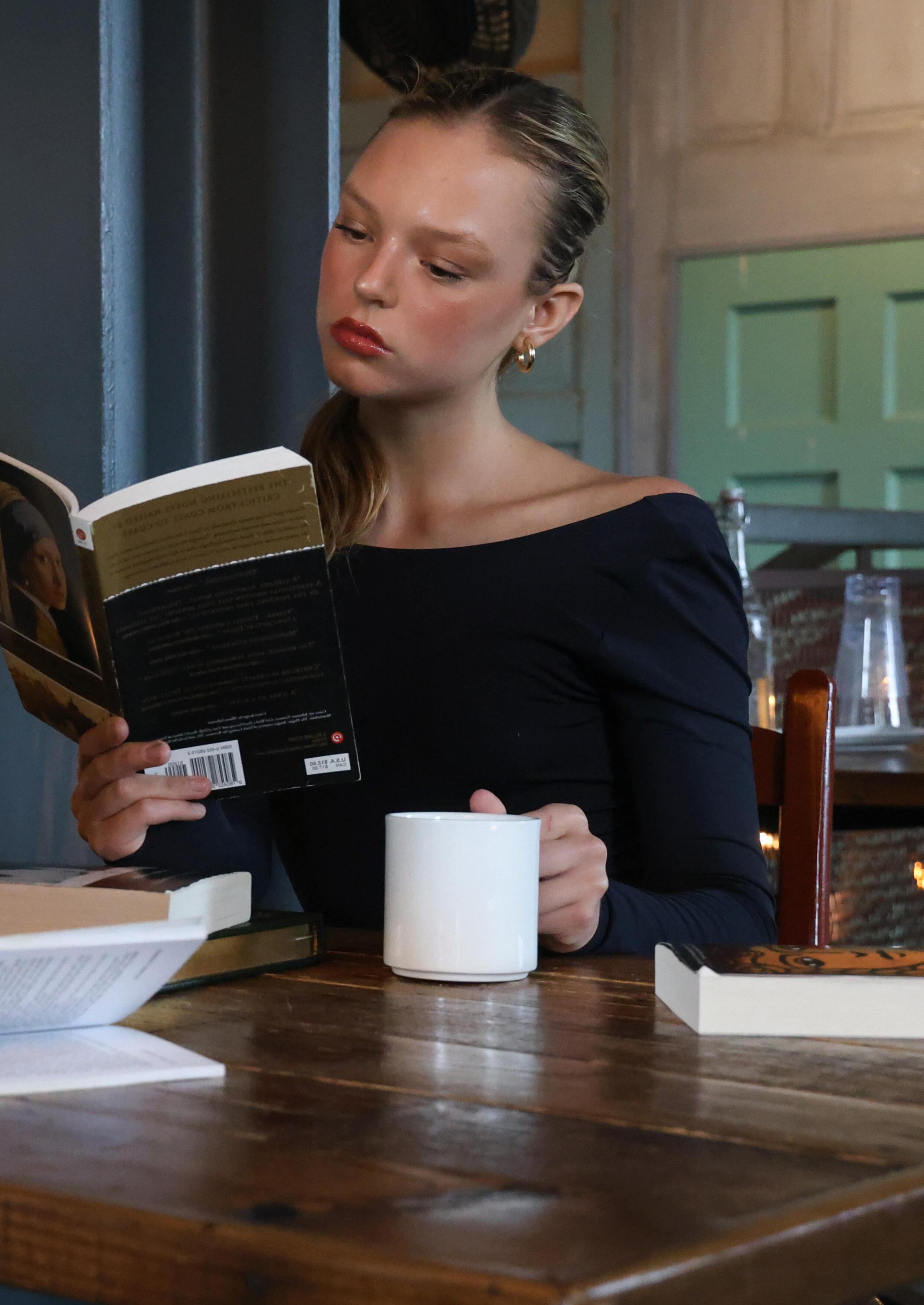

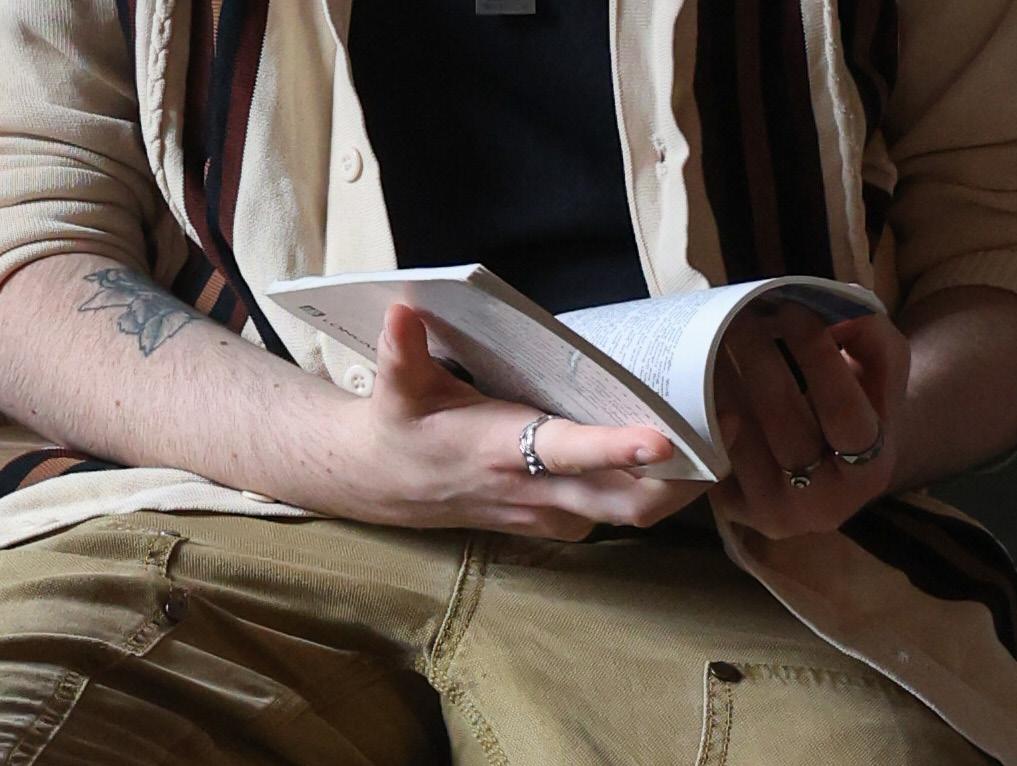

Modeled by Declan Castonguay ’25
Ava Edward ’26
Ashmita Duggal ’26
Jackson Cantrell ’25

Style by
Grace Ki Rivera ’26
Richa Verma ’26
Hannah McMinn ’26

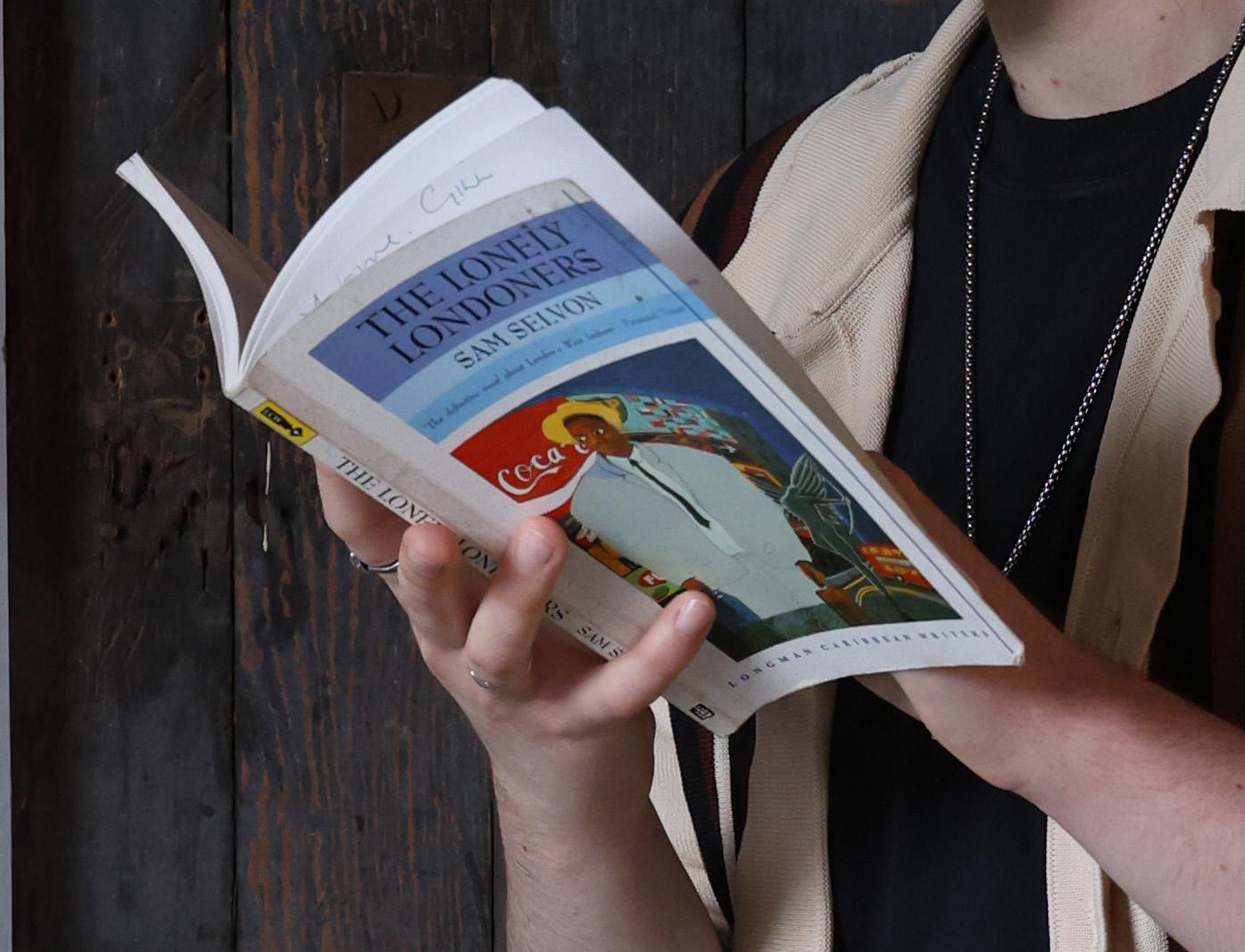
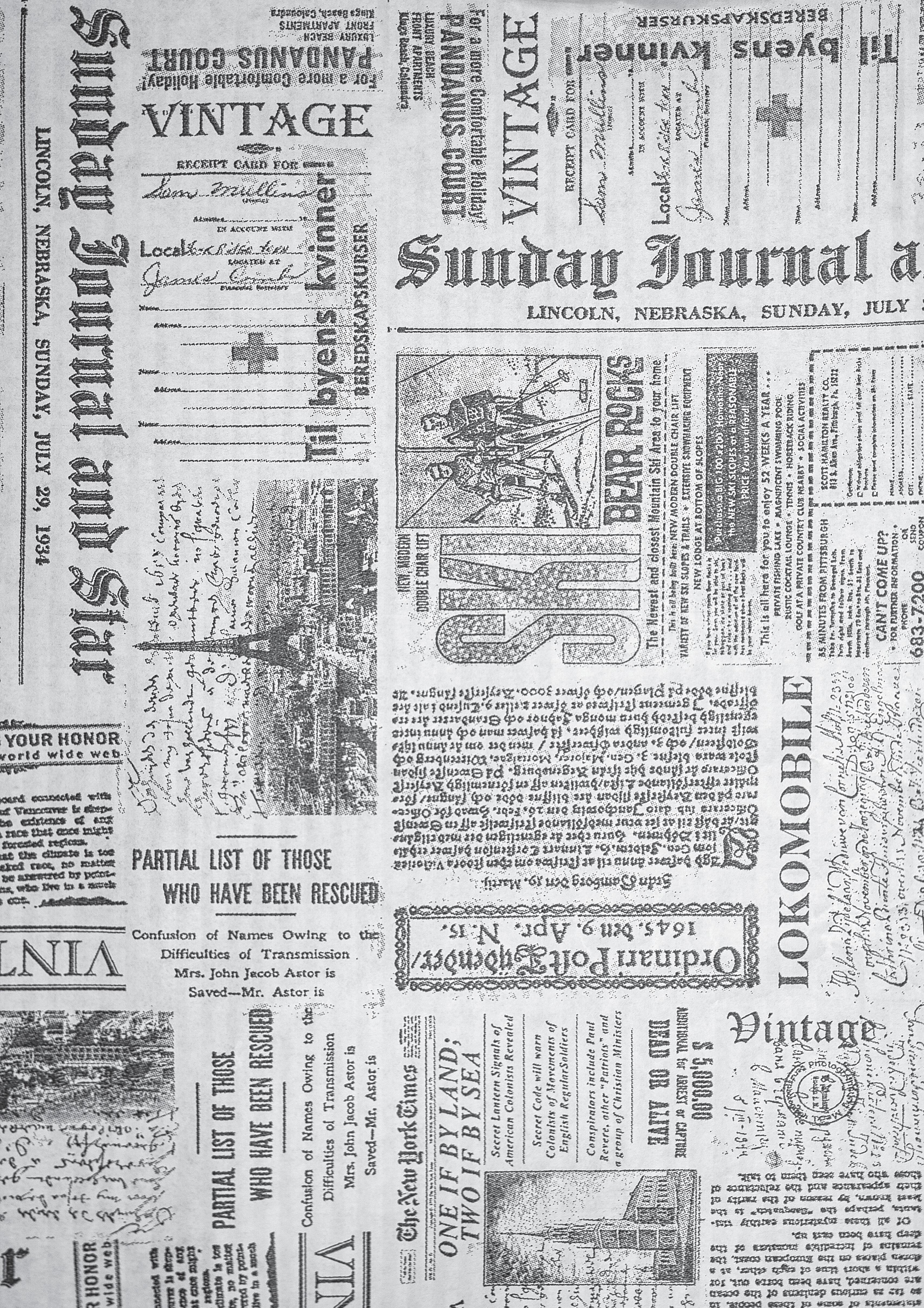


Story by Anna Harrington ’26
Design by Clare Pacella ’28
After surveying any and all sweet treats at the College of William and Mary’s two all-you-can-eat dining halls, Anna Harrington ’26 highlights some of the best and some of the worst.
Whether eating dinner in Sadler or the Caf, there is the inevitable challenge of finding the perfect sweet treat to complete your meal. Well, worry no longer: This is a comprehensive review and ranking of the dining hall desserts by someone who loves talking about food, especially of the sweet variety.
Starting off with a classic and major headliner in both dining halls, we have the chocolate chip cookies. They are a staple dessert, always soft with a satisfactory cookie-to-chip ratio. If I have one cookie, I am probably going to have another. They are also the number one answer when polling others about their favorite dining hall dessert. The one con: These cookies are never freshly baked, and therefore are often cold, having been recently defrosted. This has the polarizing

effect of either eating a refreshing bite or a soggy cookie. If there are no other desserts that excite me, I will always reach for a cookie.
Next, we have the unreliable favorite: Sadler soft serve. The topping station is unmatched in variety, and the choice of cup or cone is luxurious. My favorite way to eat this dessert is on a cone with rainbow sprinkles and chocolate chips. A pro tip to enjoying your ice cream in a cone without the toppings falling off is to dispense it into a cup, mix it all together, and then transfer it to your cone. However, on days when I am headed to the ice cream machine with a smile on my face,

ready to devour the creamy goodness and see the “Out of Order” sign, I rue the day I first put my hand on the chocolate-and-vanilla swirl handle. The seemingly near day the ice cream machine serves its last swirl will be a day of mourning across campus.
My all-time favorite dining hall dessert is the vegan chocolate brownies served in Sadler. The brownies are a great option for those with dietary restrictions and are jaw-droppingly delicious. As someone who often struggles with tummy issues, I am assured that when I grab this dessert that I am safe to continue my day in bliss. The subtle banana afternotes in these brownies are perfection, as it cuts through the rich cocoa flavor so that when I finish one, I am ready to go back for more. However, if you’re not a banana fan, this one may not be for you. The absolute best part about this dessert is that you can bring it on the go. The brownies are usually served in a plastic bag, so you eat this dessert in the comfort of your own room, on the walk to your third class of the day, or as you’re hanging out on the Sunken Garden with your friends. Additionally, if you are not a fan of chocolate, they often have vegan blondies too. The Sadler brownies are my underrated heroes, and I will always endorse them to everyone.

cup of mysterious sludge with whipped cream on top. Let me say it here for the world to hear ... dairy products need to be refrigerated! The very thought of eating warm pudding that has been sitting out for hours in the dining hall air makes my stomach churn. Of course, this is my subjective opinion, but if you tell me your favorite dessert is pudding, I will gag.
Another personal favorite of mine is the various cereal bars that fall under the category of Rice Krispie Treats — at least, in my mind. The diversity is off the charts with the use of Fruit Loops, Lucky Charms, Cinnamon Toast Crunch, Golden Grahams, and Rice Krispies. The marshmallow is the perfect binding component for the cereal and the texture is altogether pleasing. I also love a surprise, so never knowing what cereal it will be on any given day is a thrill.
There are some desserts in the dining hall that I don’t dare put on my plate. Too many times I have gone to the dessert case in hopes of seeing a rice krispie treat or cookie, and instead have found banana pudding or some random
Since I can’t highlight every dessert, I have included some honorable mentions. The dessert pizza is a rare commodity, Caf donut holes are always tasty, the Sadler mini muffins are consistently mediocre, and Caf milkshakes are good before they become soup. Whether your dining hall of choice is Caf or Sadler, there is no doubt the desserts can often make up for the undercooked chicken and the impossibility of finding a seat during lunchtime. Godspeed to your sweet treat hunting ventures!


We asked Flat Hat Magazine Sta�

Opening in 2023, the new Music Building marks a significant style departure from its predecessor, Ewell Hall. While the building makes improvements in utility, its design, as Portia Dai ’26 describes, leaves much to be desired.
Echooo-ooo-o. Maybe you’ve experienced the reverberation when you shouted into the abyss of a tunnel, or maybe you’ve eliminated the ringing in your dorm as it has become more and more lived in. Ironically, the Music Building shares this resounding quality: every step taken is amplified, announcing any given person’s ascension from the concrete stairs. For a building that houses some of the most expressive performances, it’s amusing that the Music Building, after one year of opening, is still almost as barren as when it debuted.
Exterior designs for the Music Building were approved by the William & Mary Design Review Board in 2017, planning for the expansion and/ or renovation of the Arts Quarter — which encompasses The Martha Wren Briggs Center for the Visual Arts (containing a renovated Muscarelle
Story
Art), and Andrews Hall. The development of the Arts Quarter was planned to begin in 2018 after design plans were finalized, with phase one being the construction of the new Music Building. Though the plan was to debut the project in 2020, the Music Building did not open its doors until 2023.
After such a long-awaited renewal from Ewell Hall, which the Music Department has called home since 1955, the new Music Building has a lot to live up to. I think it falls short. Maybe it’s the gray walls and concrete floors, or maybe it’s the lack of decor. Whereas Ewell teems with evidence of life, the Music Building only looks like it’s in use when, well, it’s in use. The touches of life Ewell boasts that the Music Building lacks include bulletin boards, postings on walls, and furniture that looks comfortable to sit on (or any furniture at all). The bulletin boards of Ewell were bustling, with flier upon flier pinned and taped onto the board. The Music Building, on the other hand, has a singular board squared away in the basement with only a smattering of posts. I mean, really, what’s up with that? Last I checked, the Music Building hosts just as many — if not more — performances in its recital and concert halls.

In fact, as a frequent fan of these recitals, I know that the Music Building hosts events — even if I think the advertising of said performances could be more present. From mesmerizing performances from the College’s ensembles (William & Mary Symphony Orchestra, Middle Eastern Music Ensemble, and Botetourt
Chamber Singers, just to name a few) to concert series and guest performances (Masterclasses, the Ewell Concert Series, Ukrainian music recitals), the Comey Recital Hall and the Concert Hall are home to many a production. If only these lively performances were accompanied by a livelier environment to call home.
Speaking of homes, the Music Building lacks a “homey” feeling. Where Ewell had a grand piano in the main lobby complete with a couch seating area, the Music Building has a display case of historic pianos stored behind glass. Even the metal benches built along the wall of the first floor seem threatening. If you’ve ever been to a playground with a metal slide, you know the feeling: it’s scorching when it’s hot, and it’s freezing when it’s cold. Though the benches aren’t located outside, shouldn’t the Music Building be attempting to emulate something more welcoming than the memory of — in my opinion — the most uncomfortable playground slide? I may not be a music major, but even I know I wouldn’t want to spend a substantial amount of time on those benches.

length mirror (What this is for I’m not sure, but my roommate tells me it’s to check “form”). Though the rooms are great for functionality, they don’t fare any better design-wise. The carpet is a dark gray and the walls are white — not much to see or get distracted by while practicing, but maybe that’s the point.
“Shouldn’t the Music Building be attempting to emulate something more welcoming than the memory of — in my opinion — the most uncomfortable playground slide?”
Now you might be thinking: Wait, the author of this article isn’t a music major? Then why is she spending so much time in the music building? It’s true. I’m not a music major, but my roommate is. And as the supportive roommate I am, I’ve spent a lot of time in the Music Building. One particular space that non-music majors might not explore is the practice rooms. Located in the basement of the building, the practice rooms are accessible only down a vacant hallway and past the instrument lockers, which really just look like cages. After this jarring and somewhat unsettling entrance, the practice rooms await. Despite my distaste for the hallway leading to the practice rooms, I’m actually quite partial to the utility of the rooms themselves. Outfitted with Yamaha pianos, each room is temperature-controlled and has a full-
In fact, the Music Building isn’t all bad when it comes to functionality. Exploring the stairwells will lead you to the Phi Beta Kappa Memorial Hall and, if you walk far enough, Andrews Hall. For people frequenting any of these buildings, these tunnels are worth getting familiar with. I speak from experience: when it’s pouring rain or you simply want to avoid the above-ground foot traffic, the tunnels are fantastic. Another design element I simply can’t help but fall in love with is the enormous floor-to-ceiling windows. As someone who thrives on natural light, these windows make me jump for joy every time I’m in the Music Building. Now, if only there were comfortable seating options on the first floor, this would be my go-to study spot. The Music Building does, however, boast a different study spot: The Music Library. Located in the basement of the building, the Music Library has a few seating options, including green booths (finally, some color!), cubicle desks (think the “Zoom cubes” at the Earl Gregg Swem Library), and some tables. Though a great spot to get some studying done, the lack of windows can make time here seem obsolete.
What the Music Building lacks in character, it attempts to make up for in utility. The practical capabilities of the Music Building may not be different, or may even be better, than that of Ewell’s. However, where Ewell has the charming aesthetic of Old Campus buildings, the Music Building fully embraces the forgettable aesthetic of New Campus buildings. Ultimately, it’s the Music Building’s complete departure from “Old Campus aesthetics” that lends to my distaste of its design.





EDITORS-IN-CHIEF
Andrew Johnston
Emelia Marshall
CHIEF-OF-STAFF
Rebecca Altman
CREATIVE DIRECTION
Jordan Lerner
MANAGING EDITOR
Peerawut Ruangsawasdi
COPY CHIEF
Portia Dai
COPY EDITORS
Claire Lazarus
Hannah Reid
Leah Kohler
Preethi Kuppuri
Anna Harrington
Clare Thomas
Clare Pacella
Molly Drew
Mary Rice
DESIGN EDITORS
Alex Hill
Sophia Kaisermann
Leah Kohler
Clare Pacella
Caroline Page
DIGITAL DIRECTOR
Emma Carmichael
DIGITAL EDITORS
Sophia Kaisermann
Alex Nakamitsu
Taiga Lewis
PHOTO EDITOR
Ryan Goodman
Eunice Lee
STYLE DIRECTION
Grace Ki Rivera
STYLE EDITORS
Hannah McMinn
Aggie Rigo Saitta
Richa Verma
GRAPHICS EDITORS
Zoe Davis
Isabel Li
Syeda Safdar
Danielle Seay
BUSINESS MANAGER
Rebecca Altman
WRITERS
Molly Drew
Sofia Hurlbert
